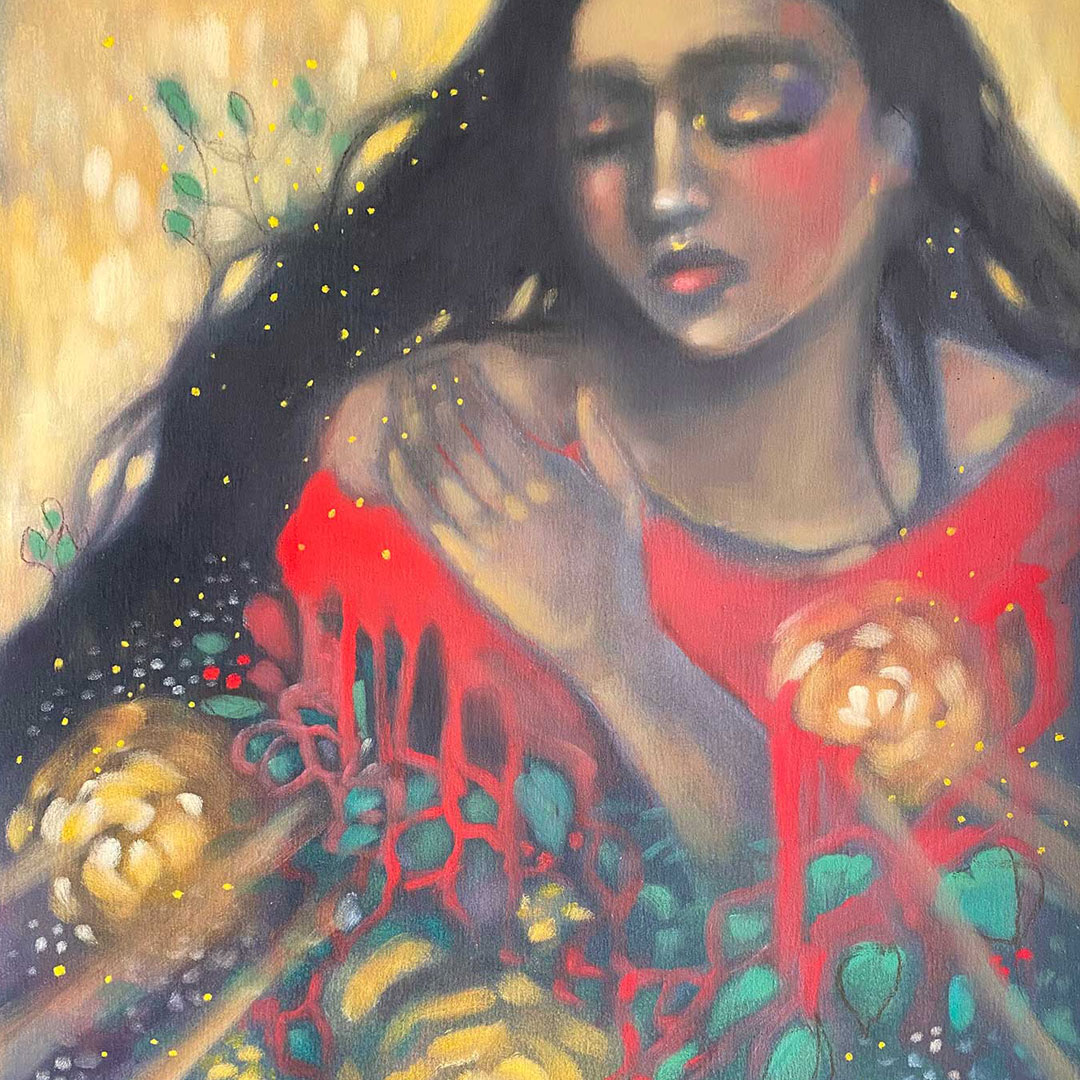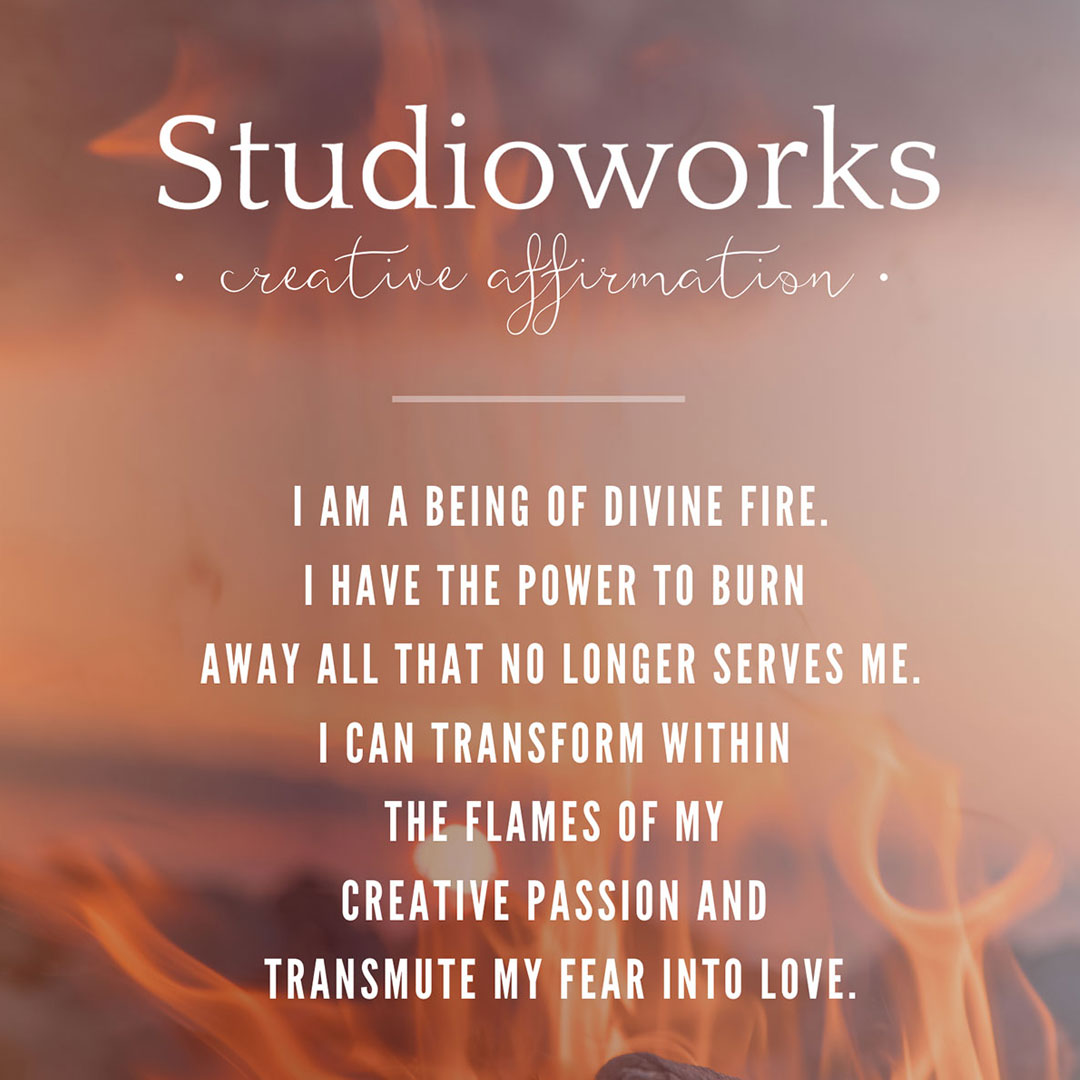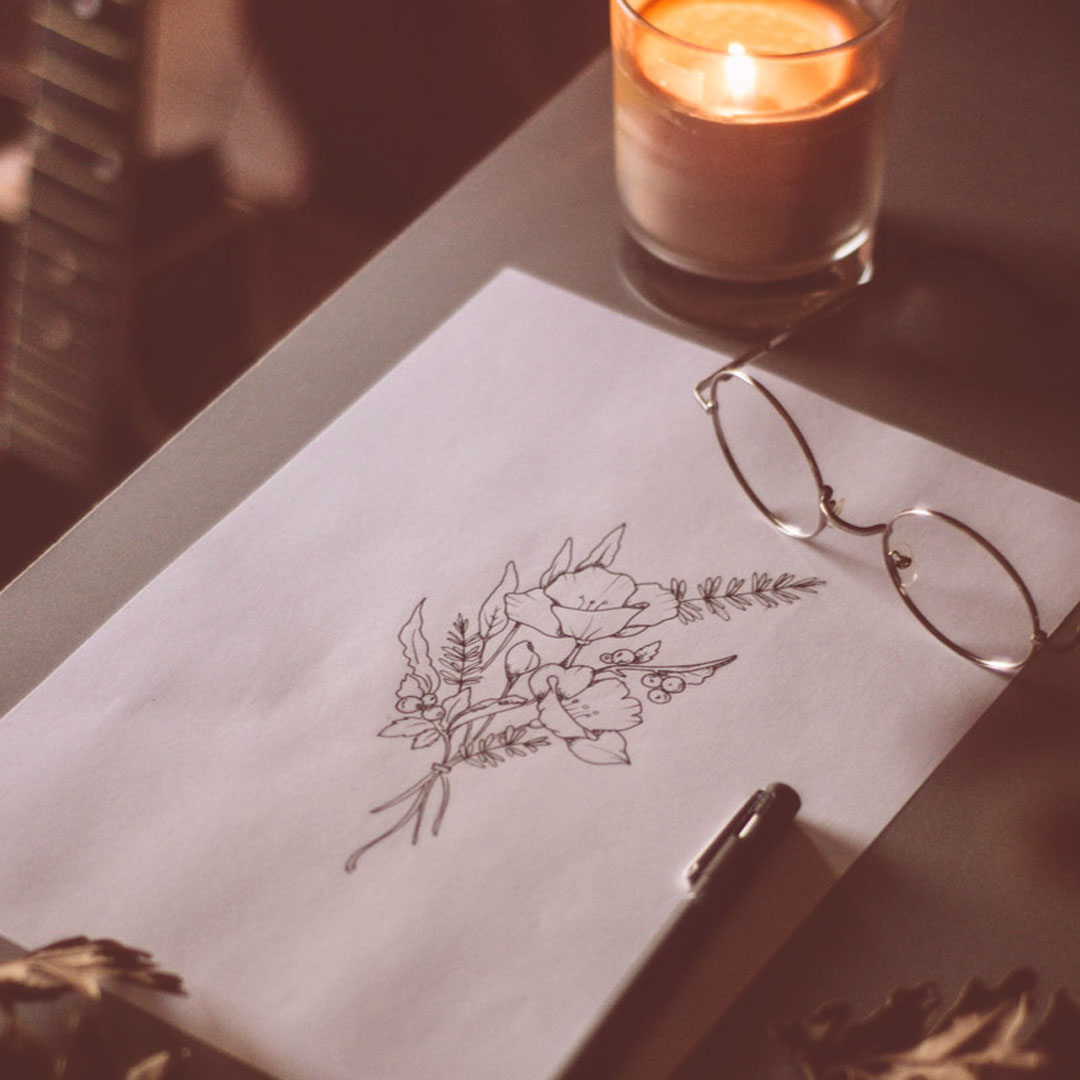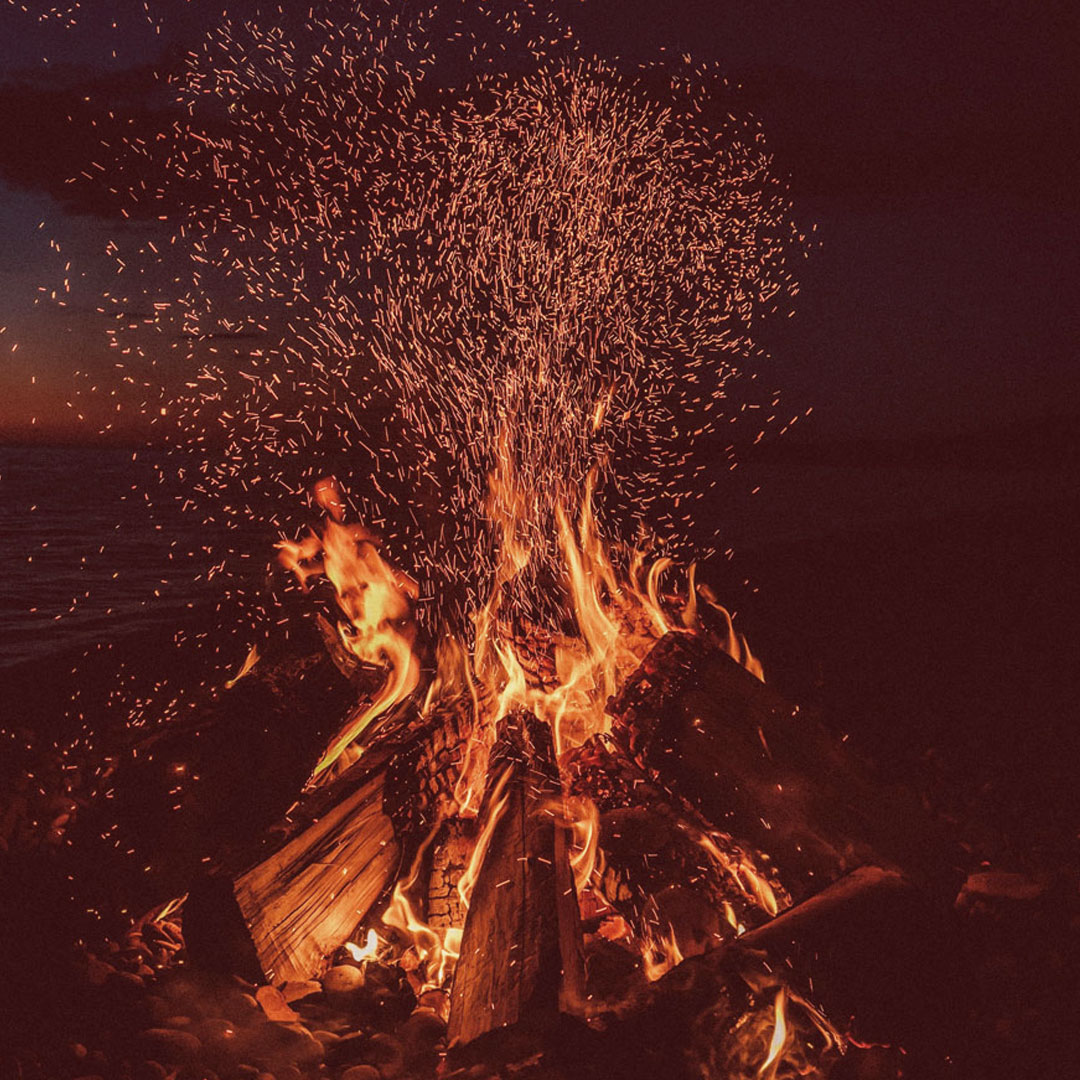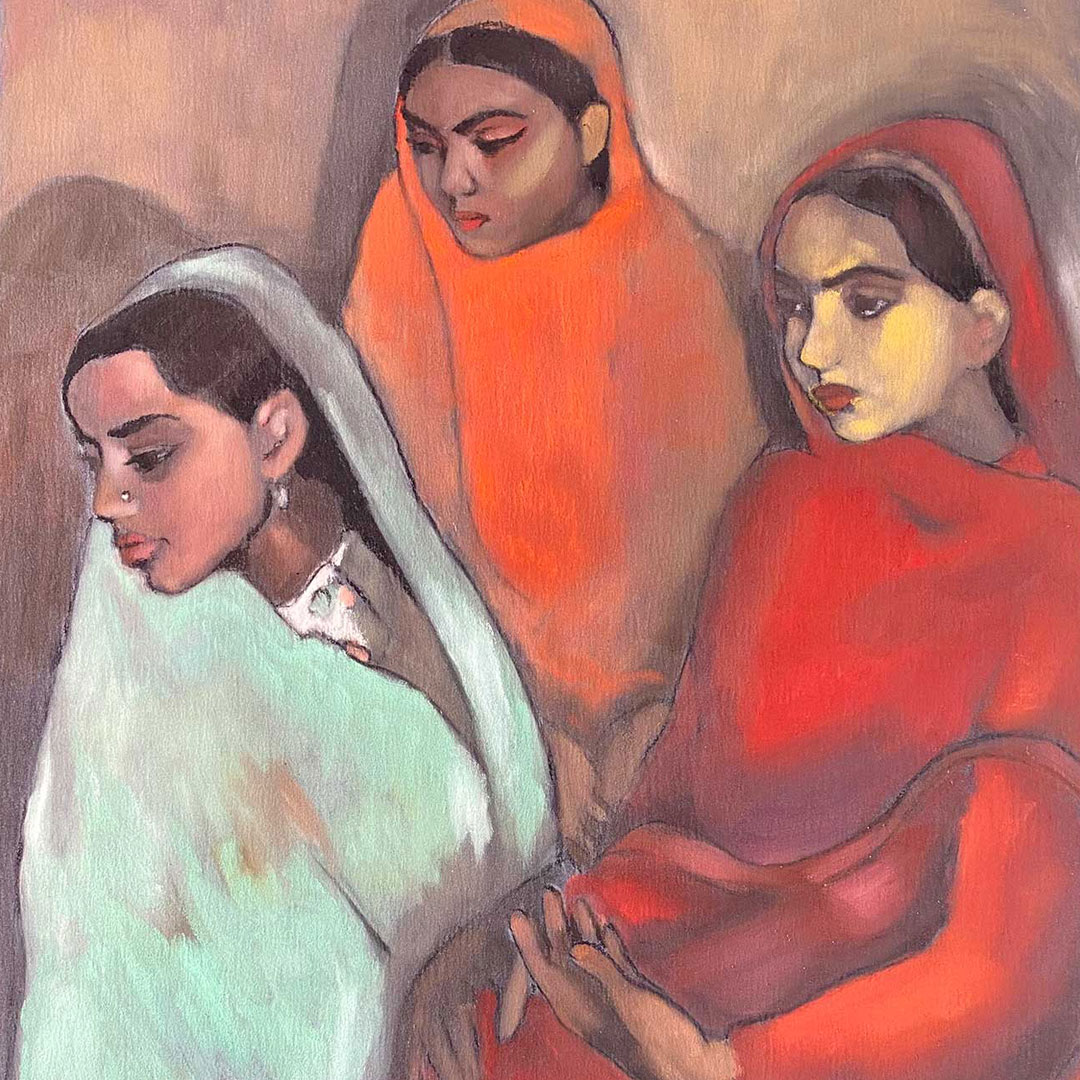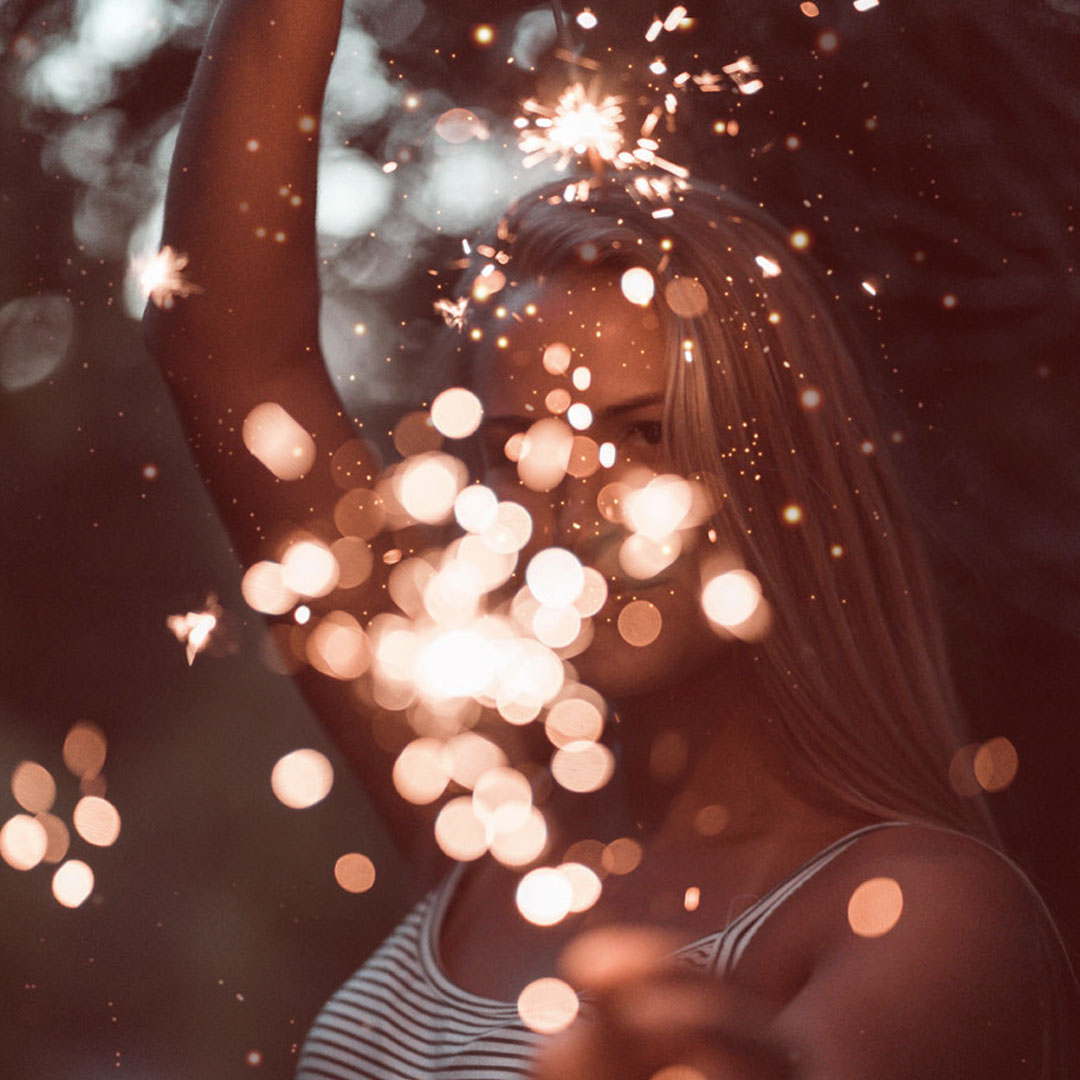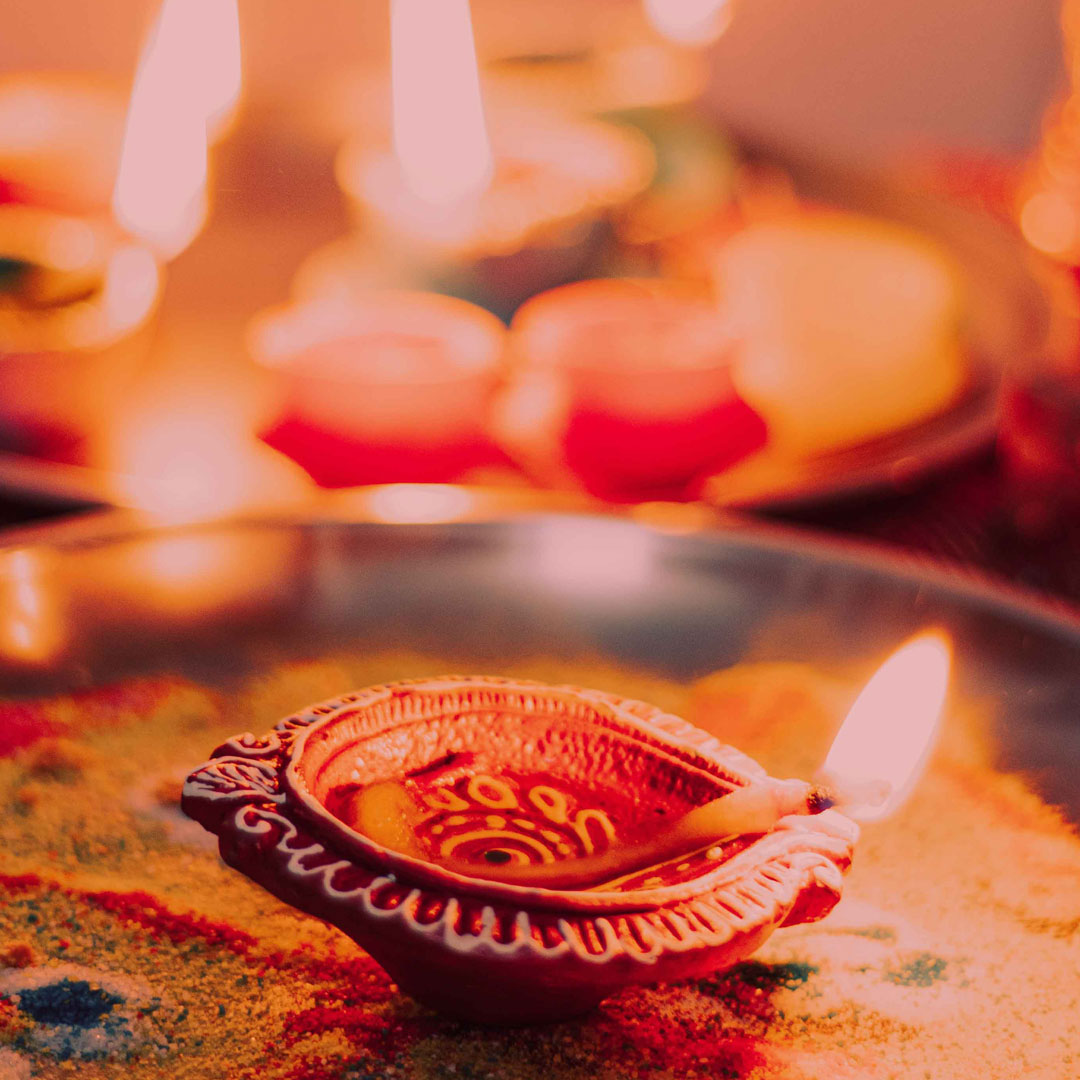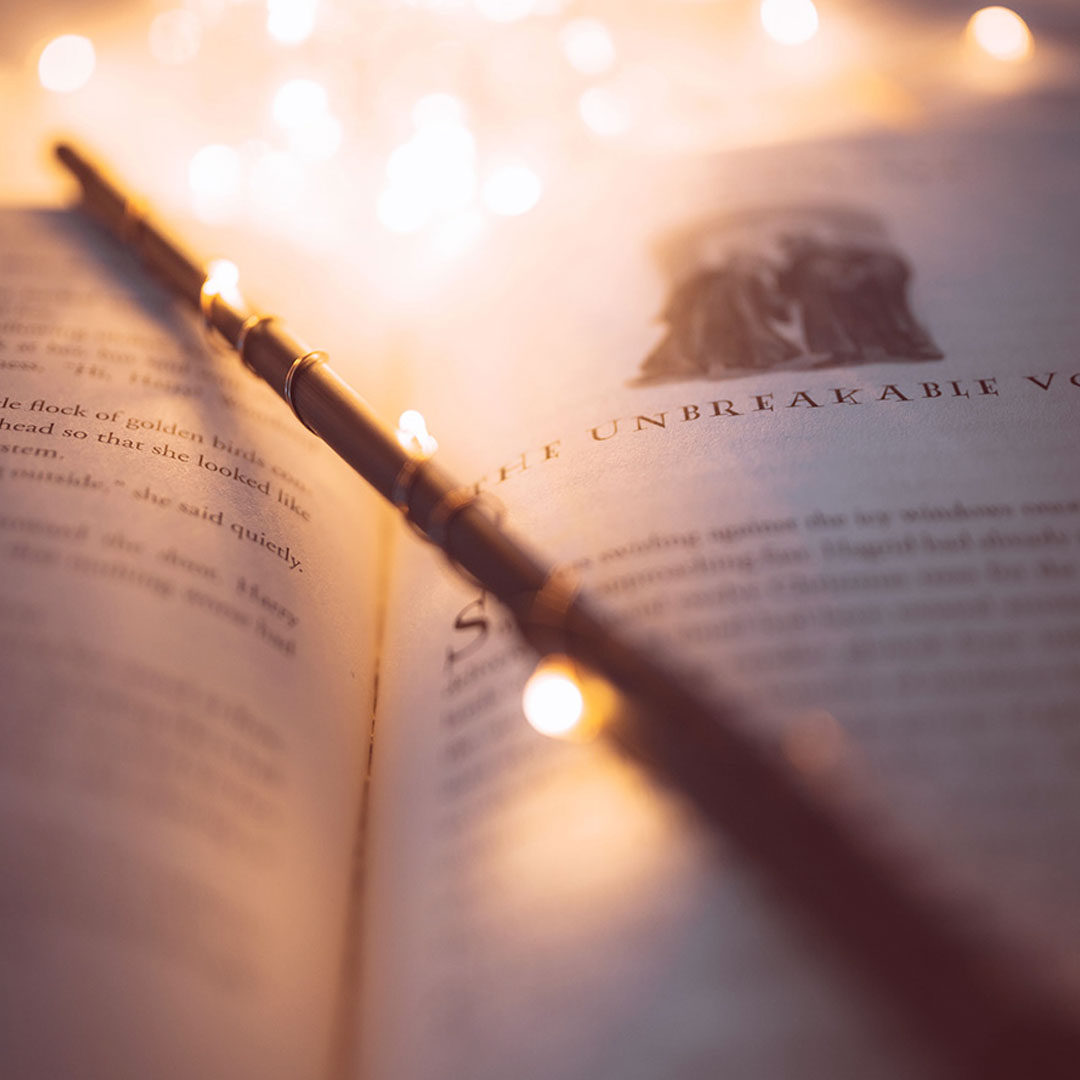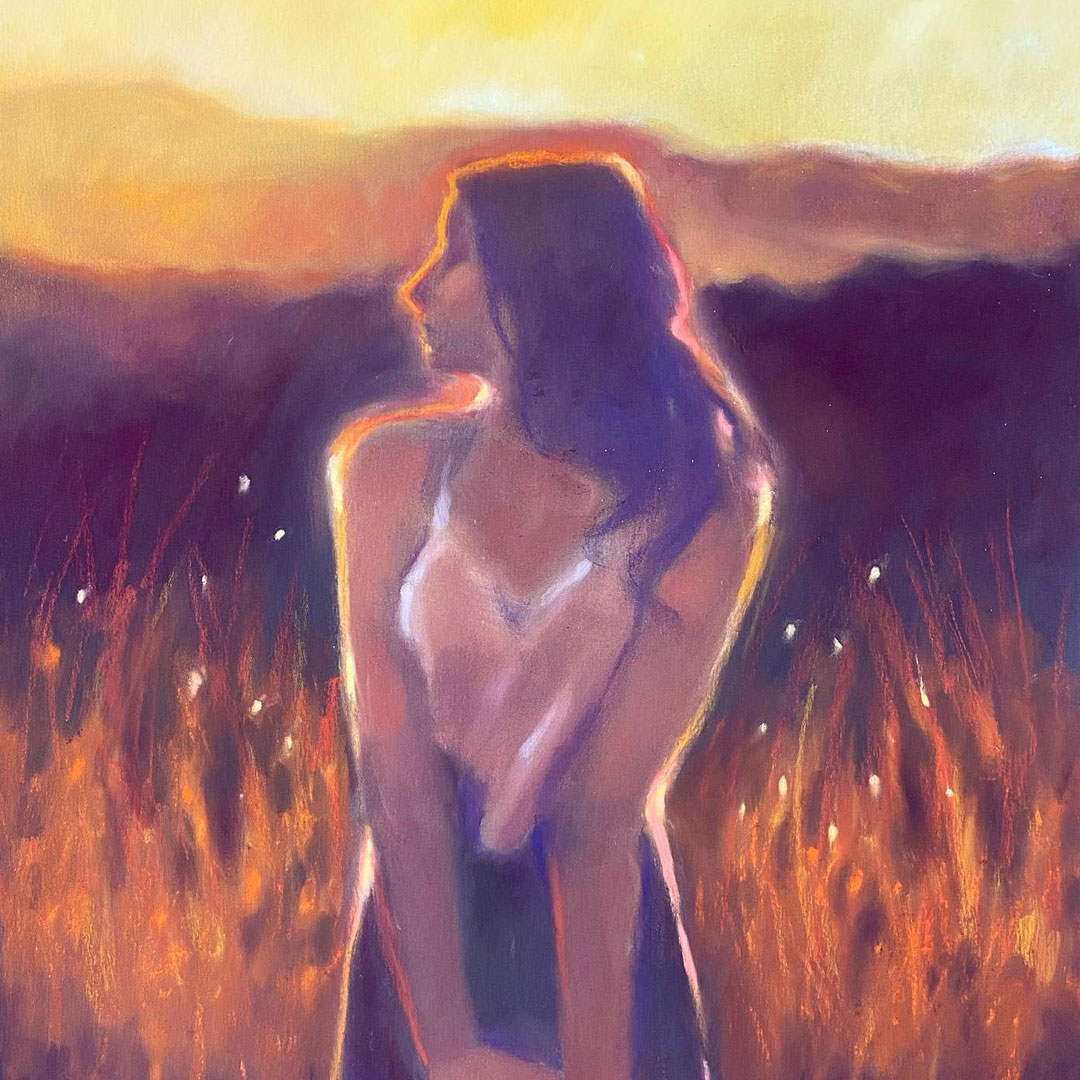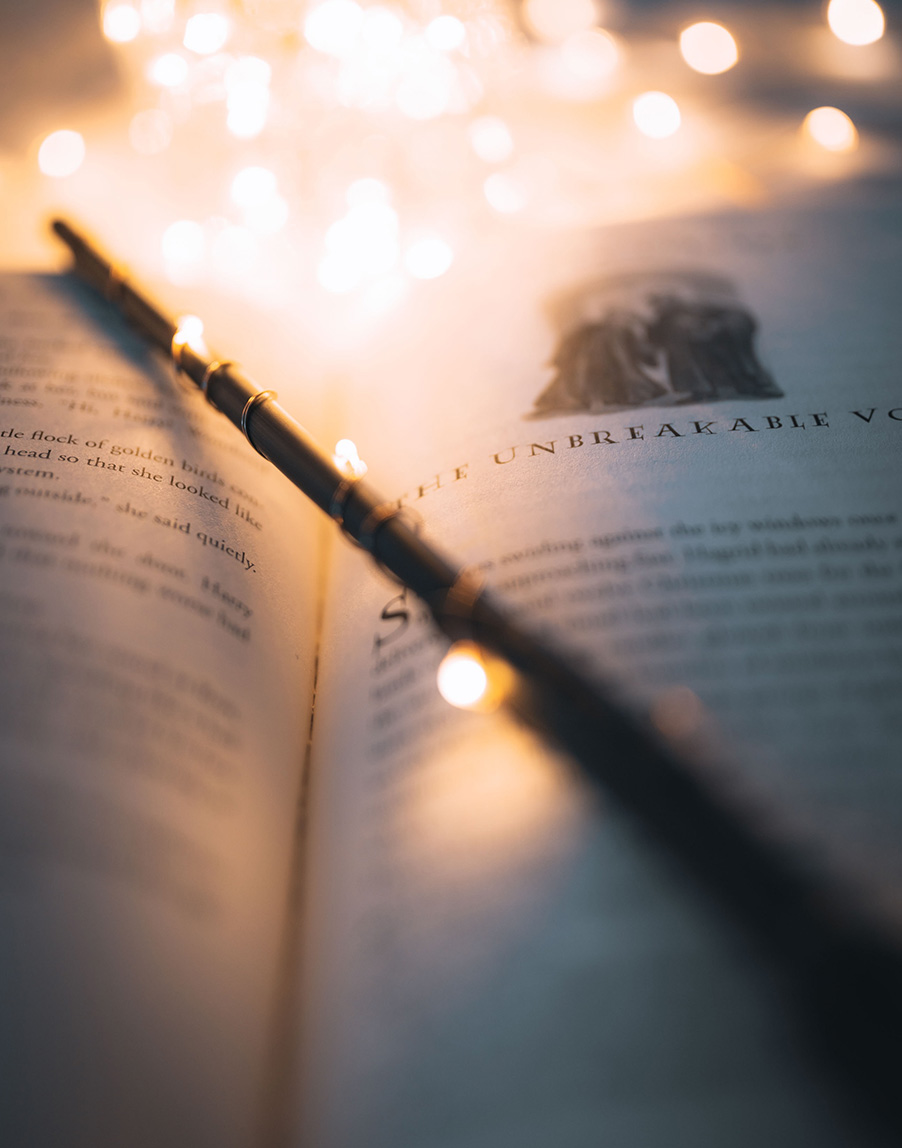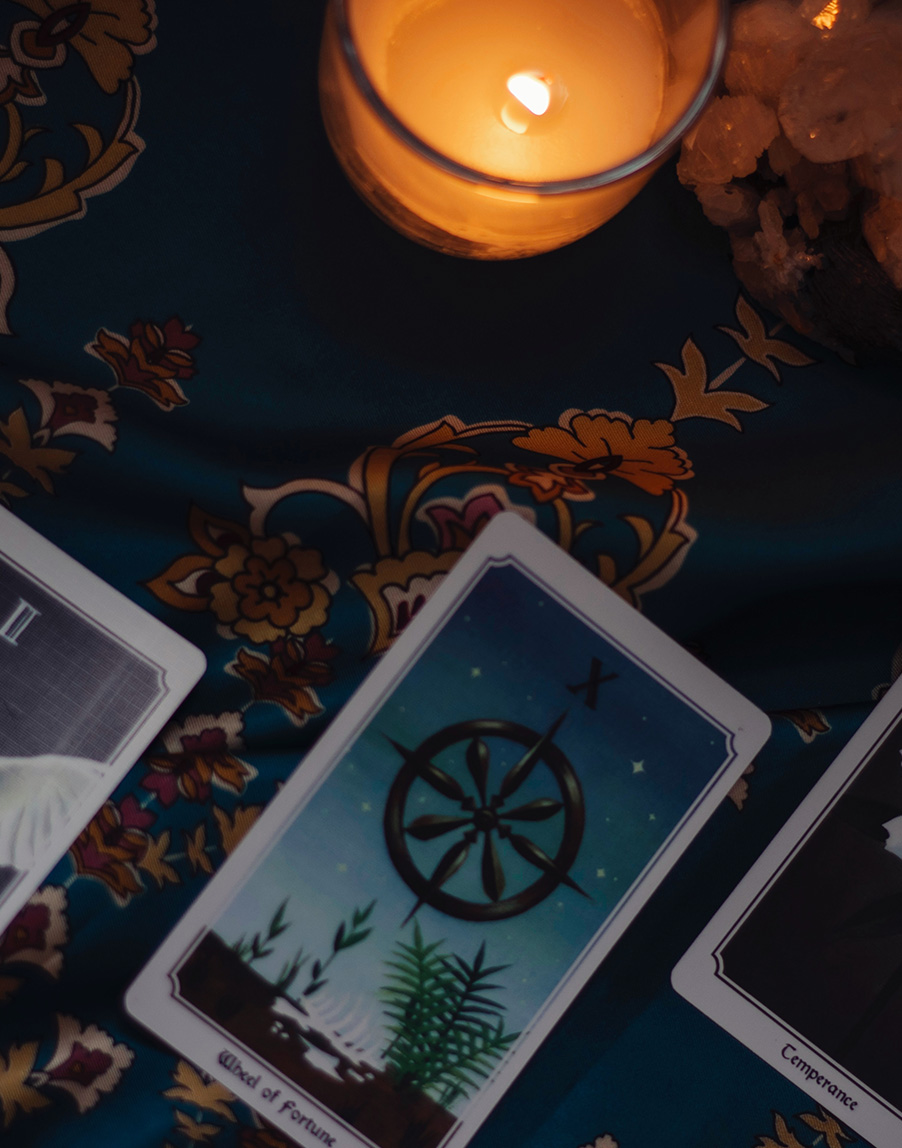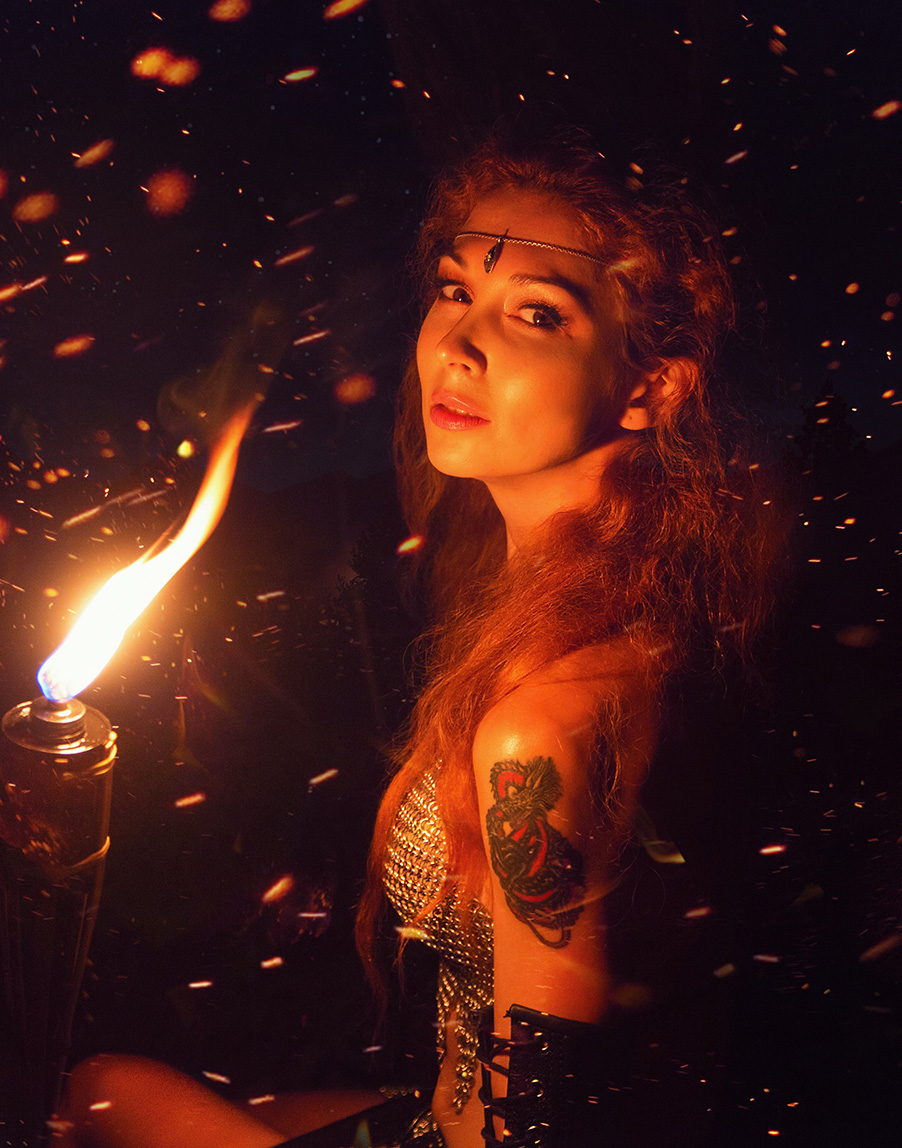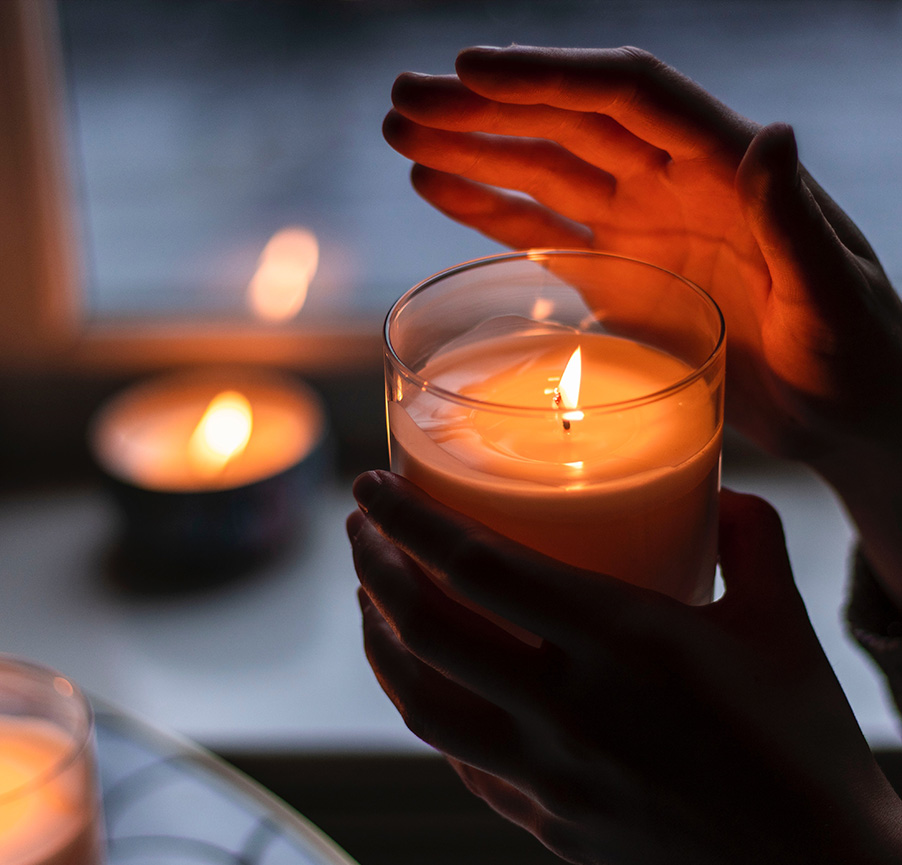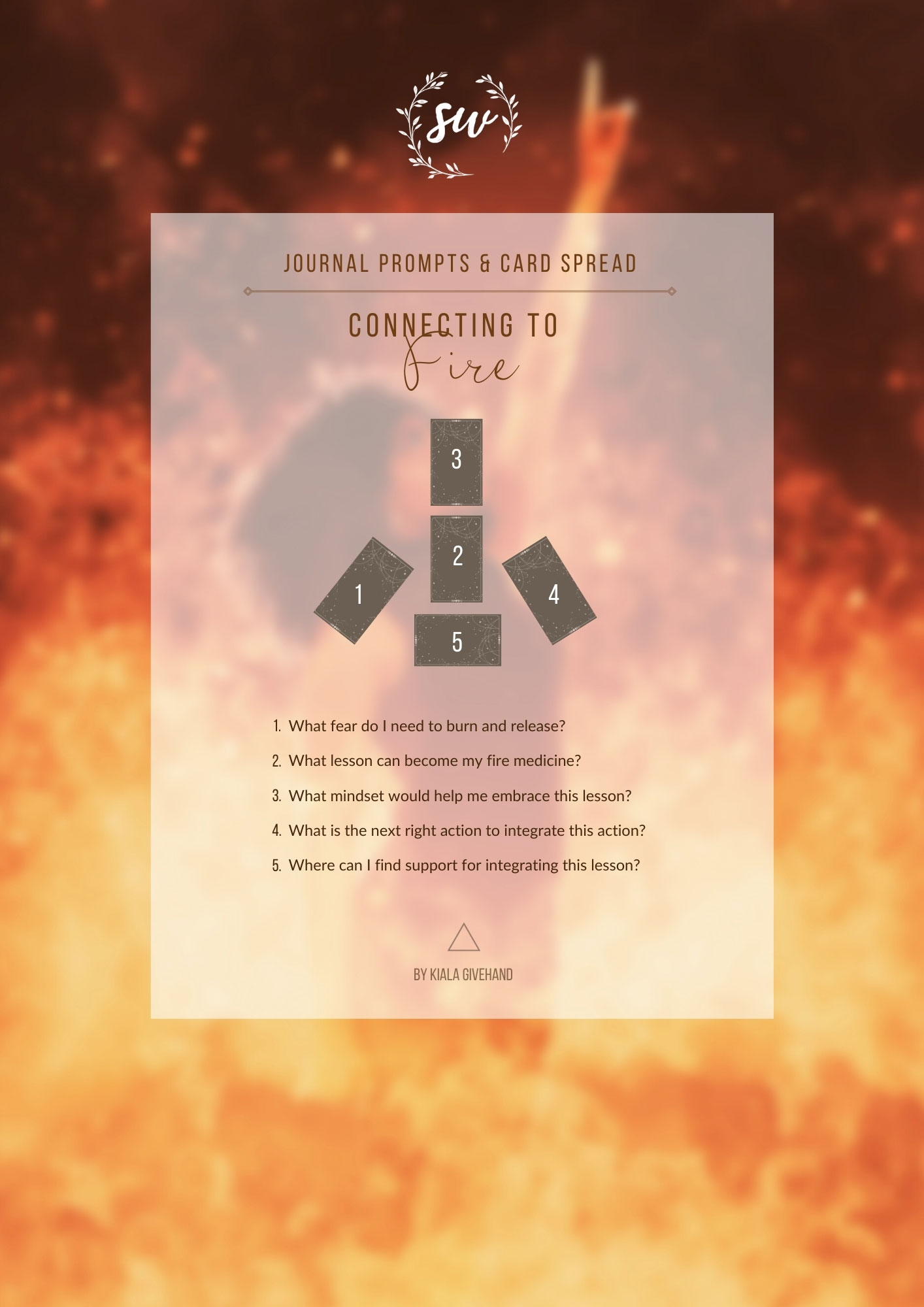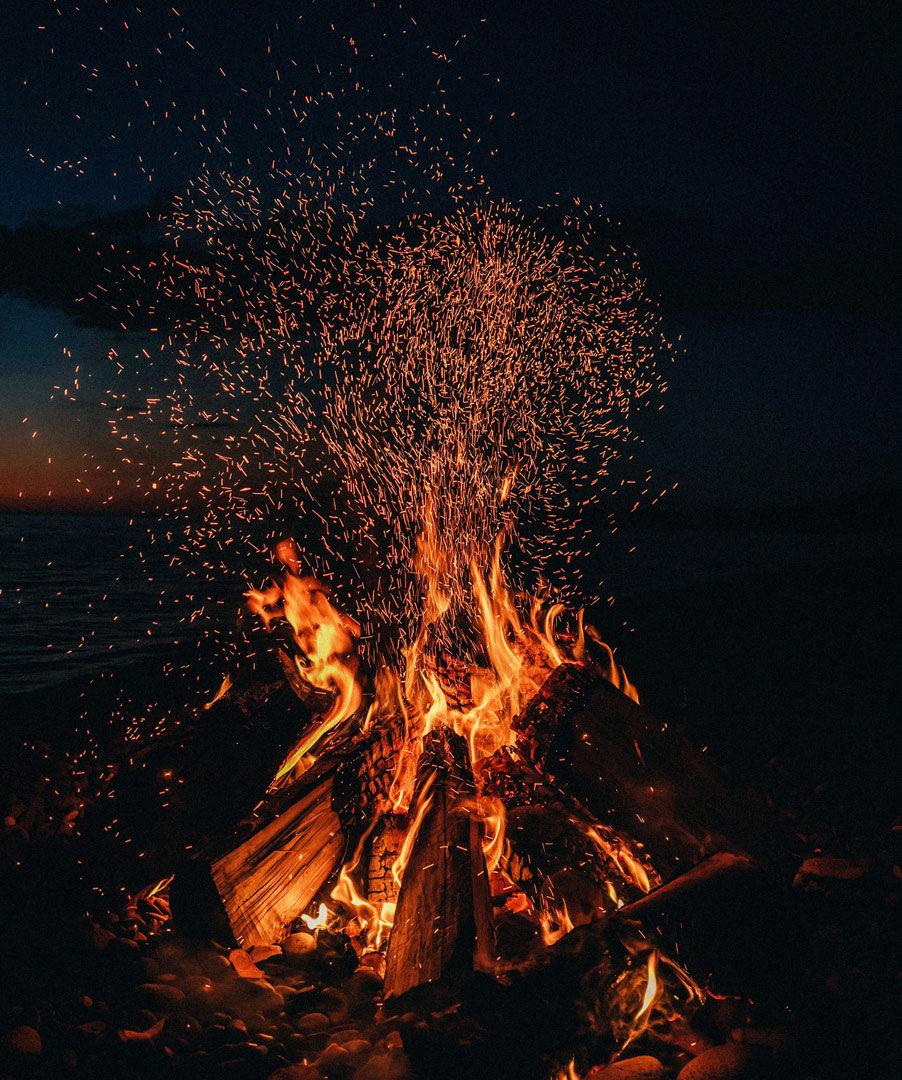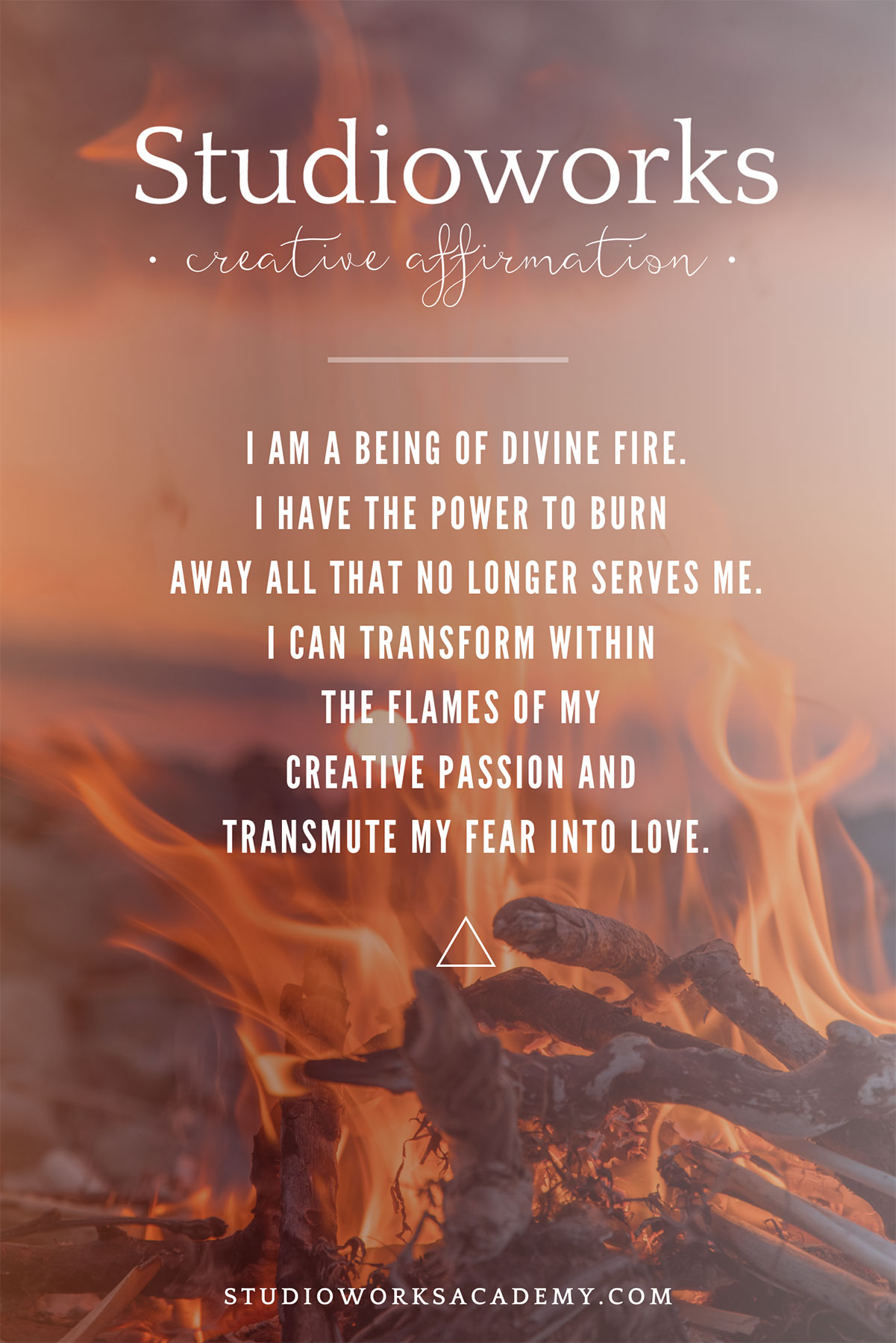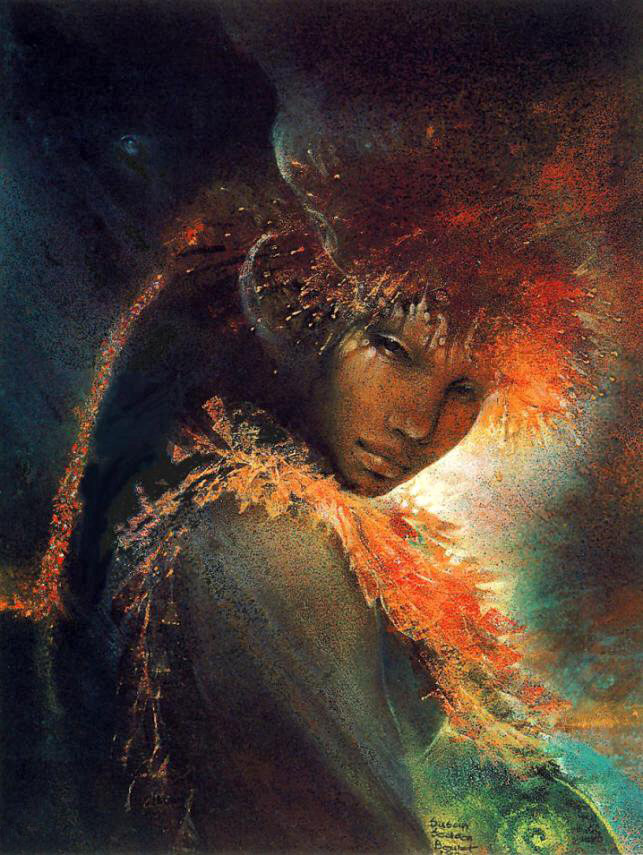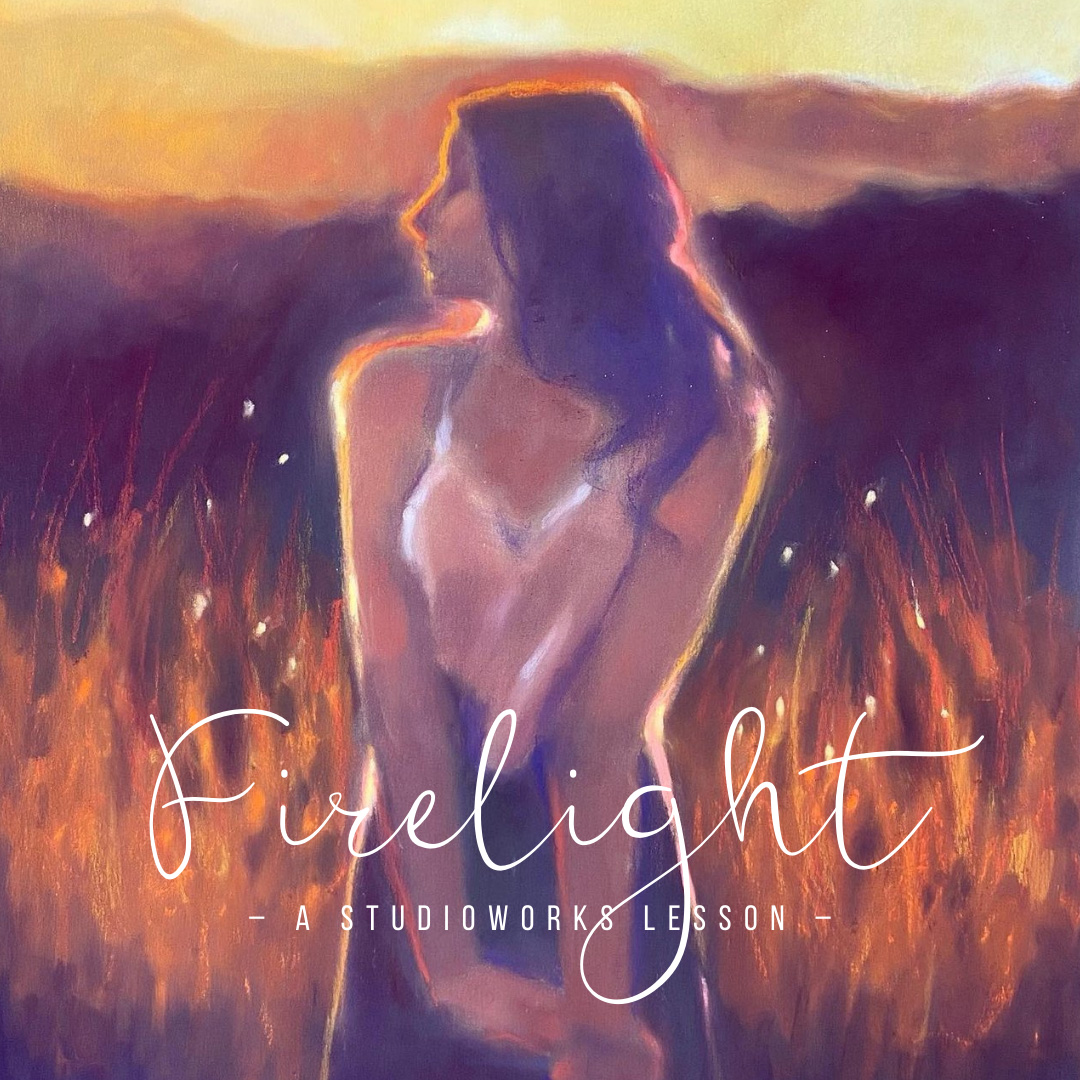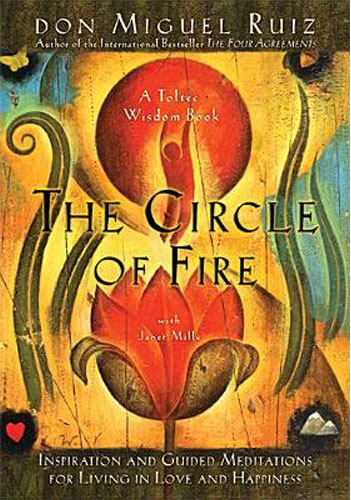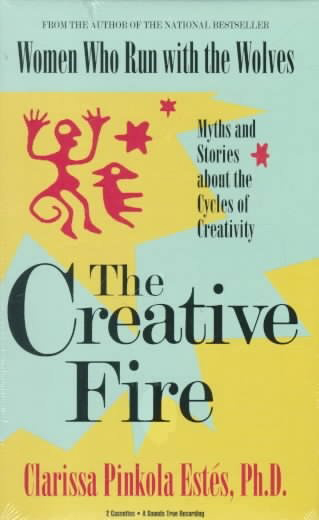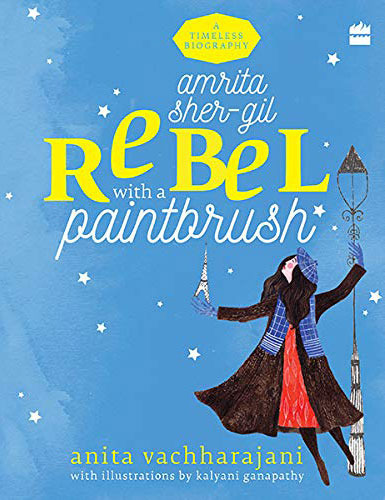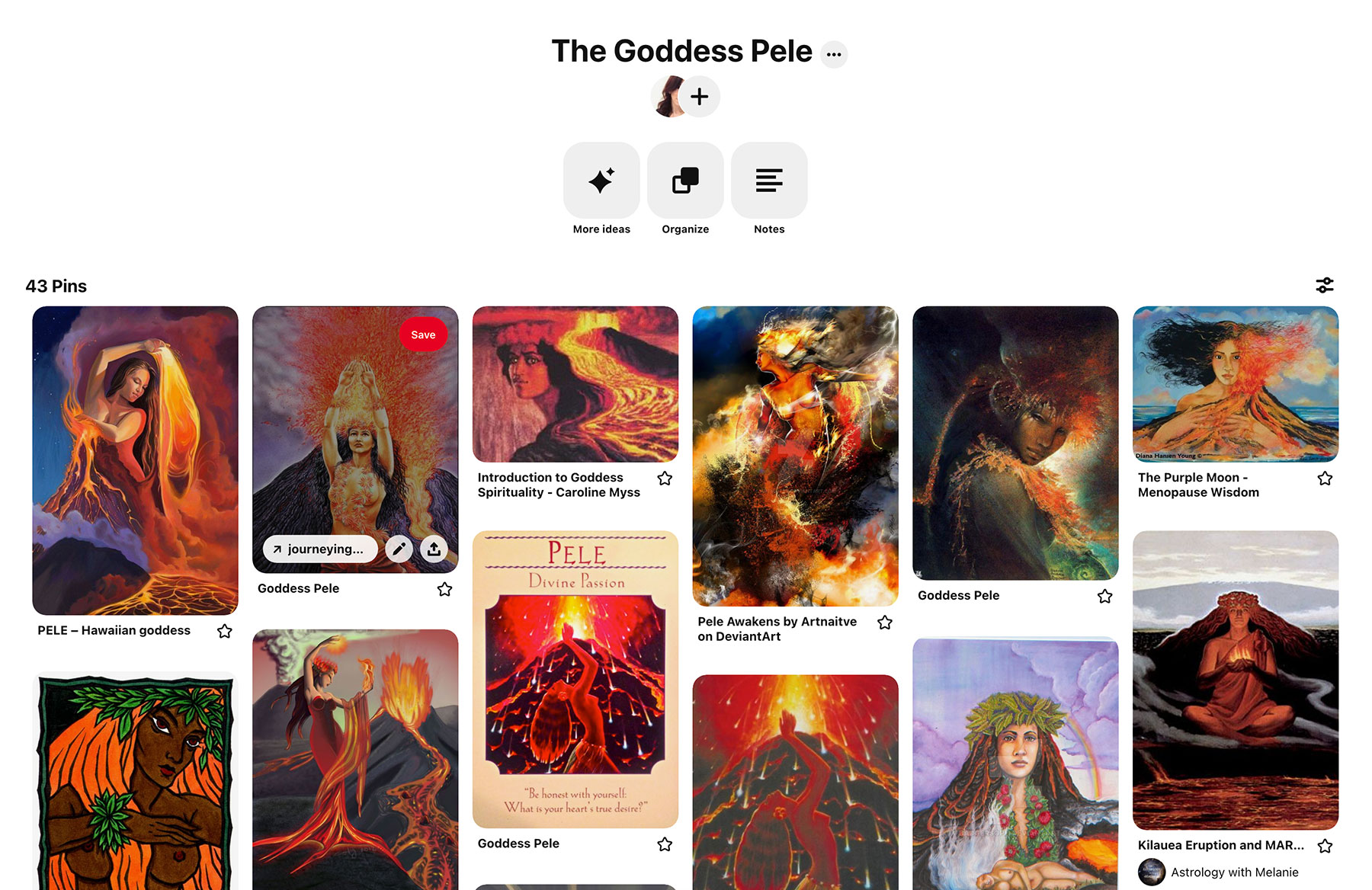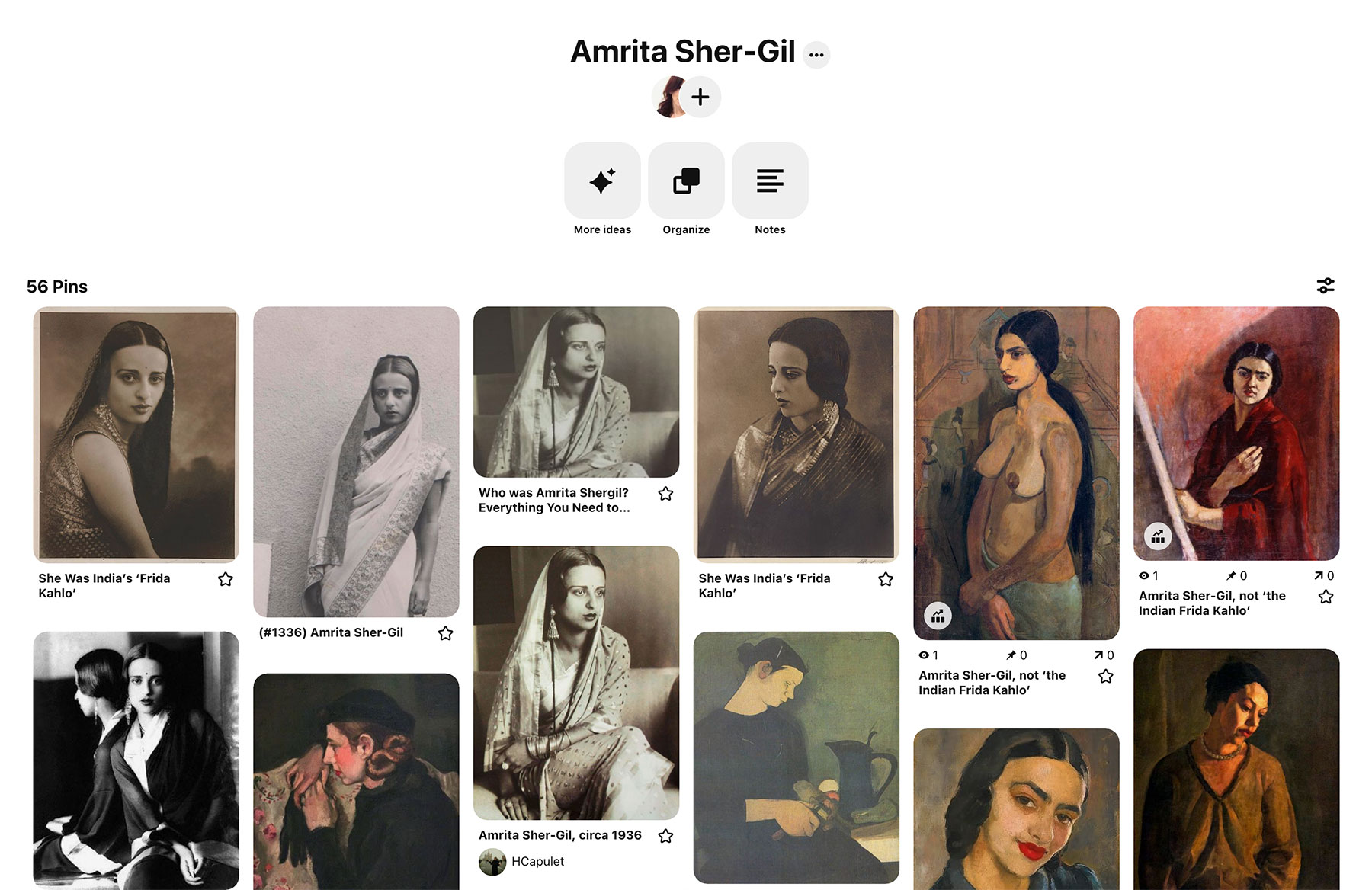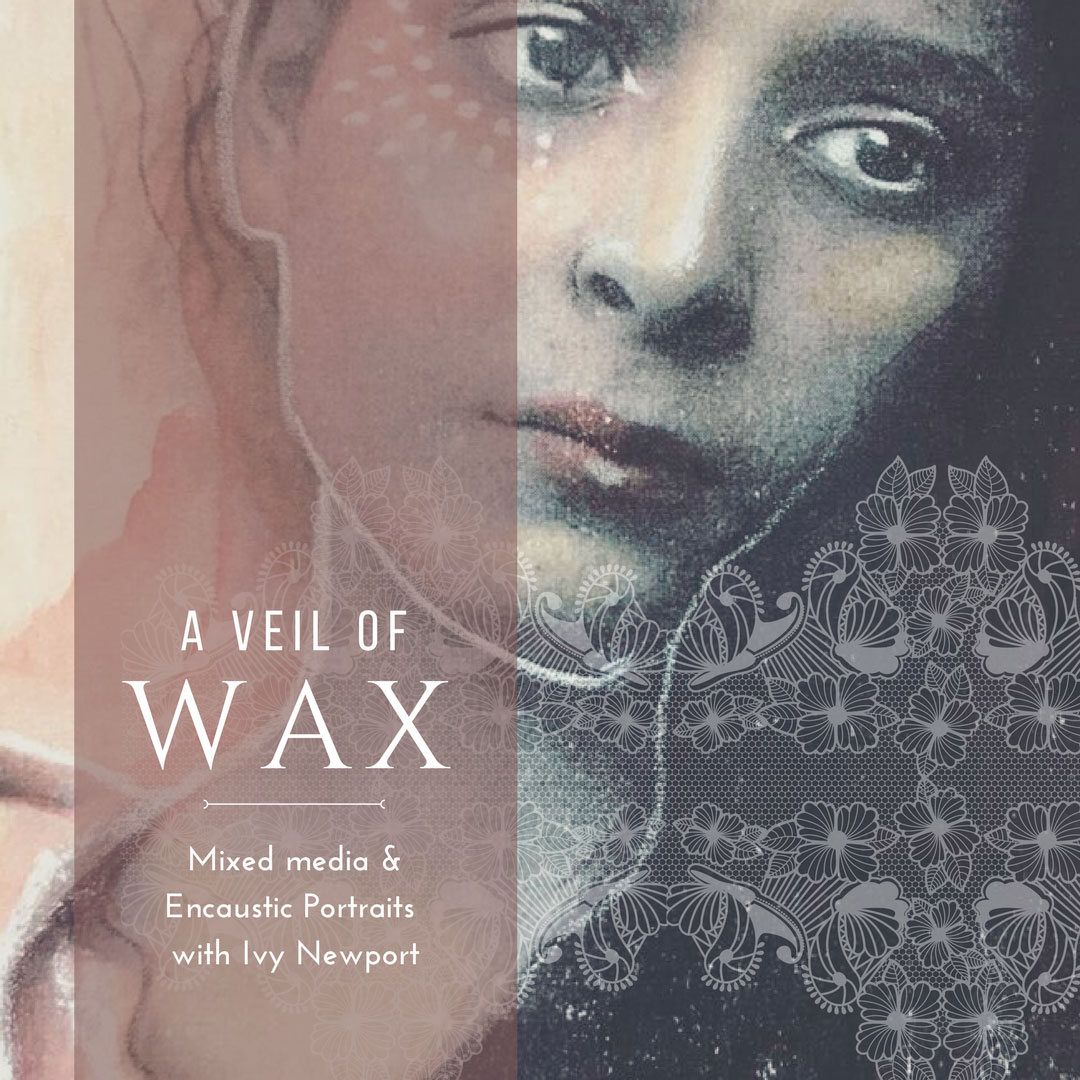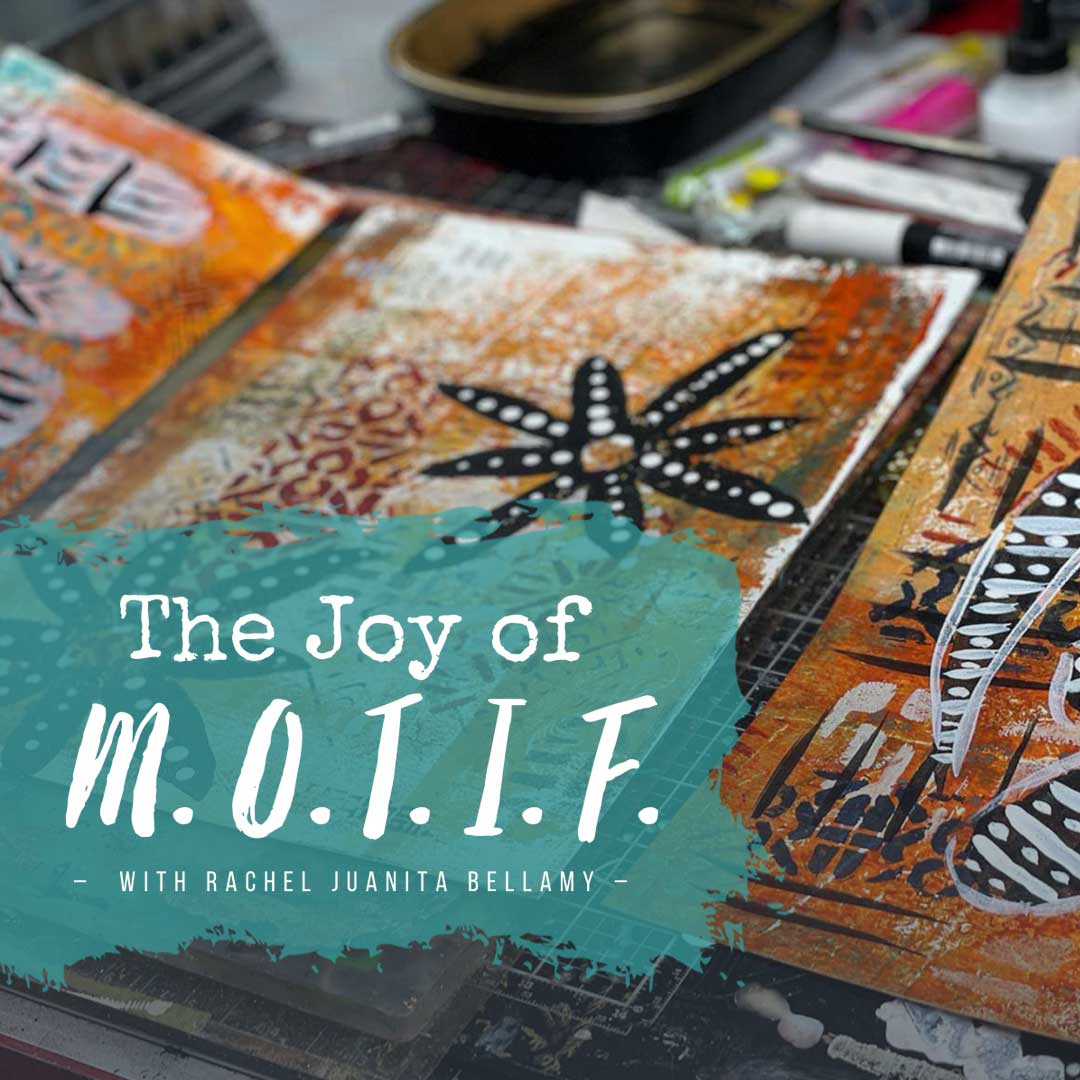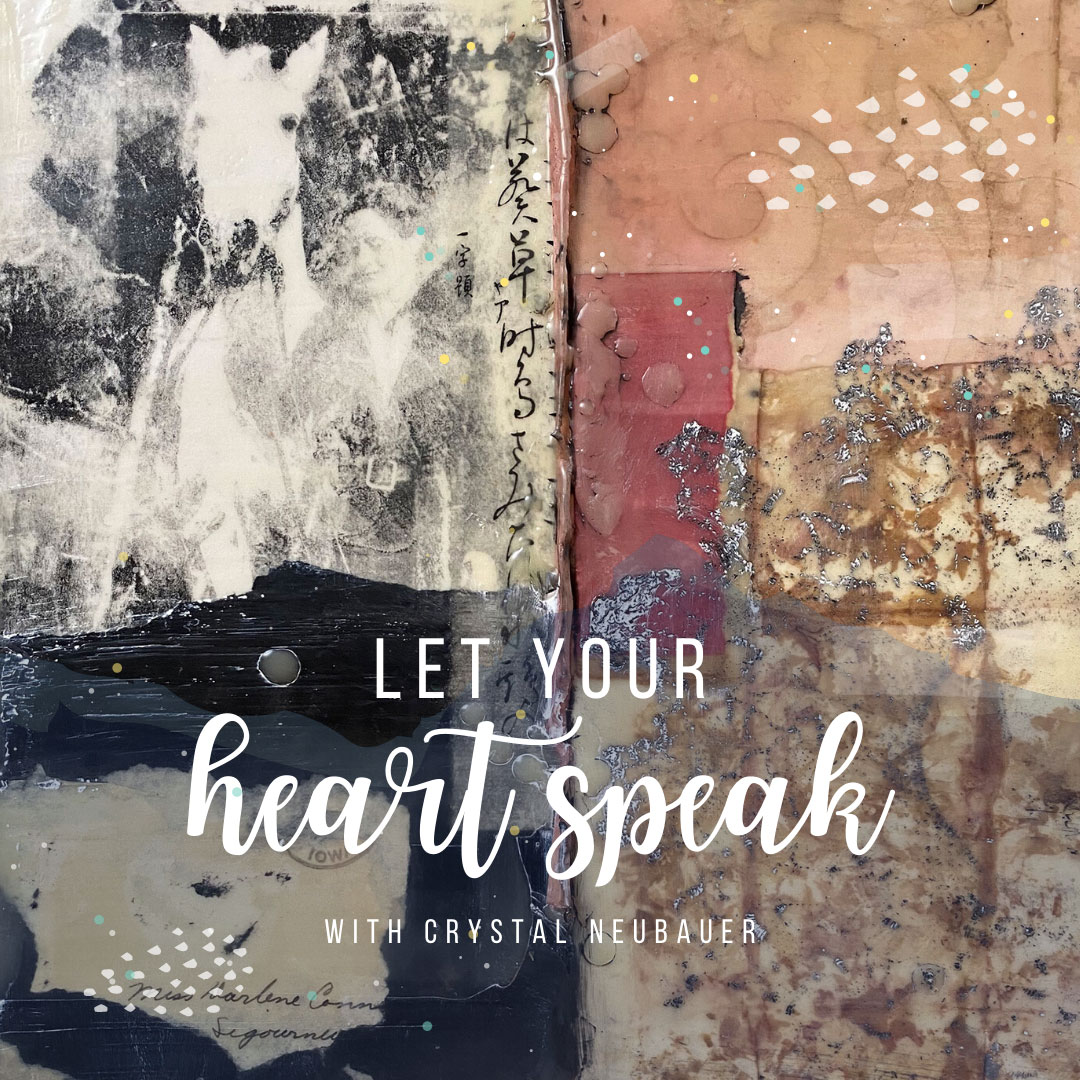IVY NEWPORT
Studioworks
Journal
a letter from ivy
Dear creative friends,
Welcome to Issue #35 of the Studioworks Journal! As always, I’m delighted you are here with me and I’m excited to share this with you. For the next few months we are going to be taking a journey through the Elements – Earth, Air, Water & Fire. Last month, we focused on Water and this month we arrive at the fourth element – Fire.
This direction occurred to me after some deep meditation and a desire to connect more intimately to our elemental creative energy. It’s so easy to forget that we are an integral part of the natural world. We are composed of these elements just as every thing on the planet is, so as artists and seekers, what better way to reconnect than to dive a little deeper into each of these aspects. We will still follow a similar format which includes studying a Master Artist each month, so fear not, we will definitely be binding our creative path to our explorations as always.
I love this synchronicity….I began writing this issue on the Full Moon of Aries – a VERY fiery sign! Woo! So, get ready…to embrace the creative fire within you and dance with the flames!
xo,

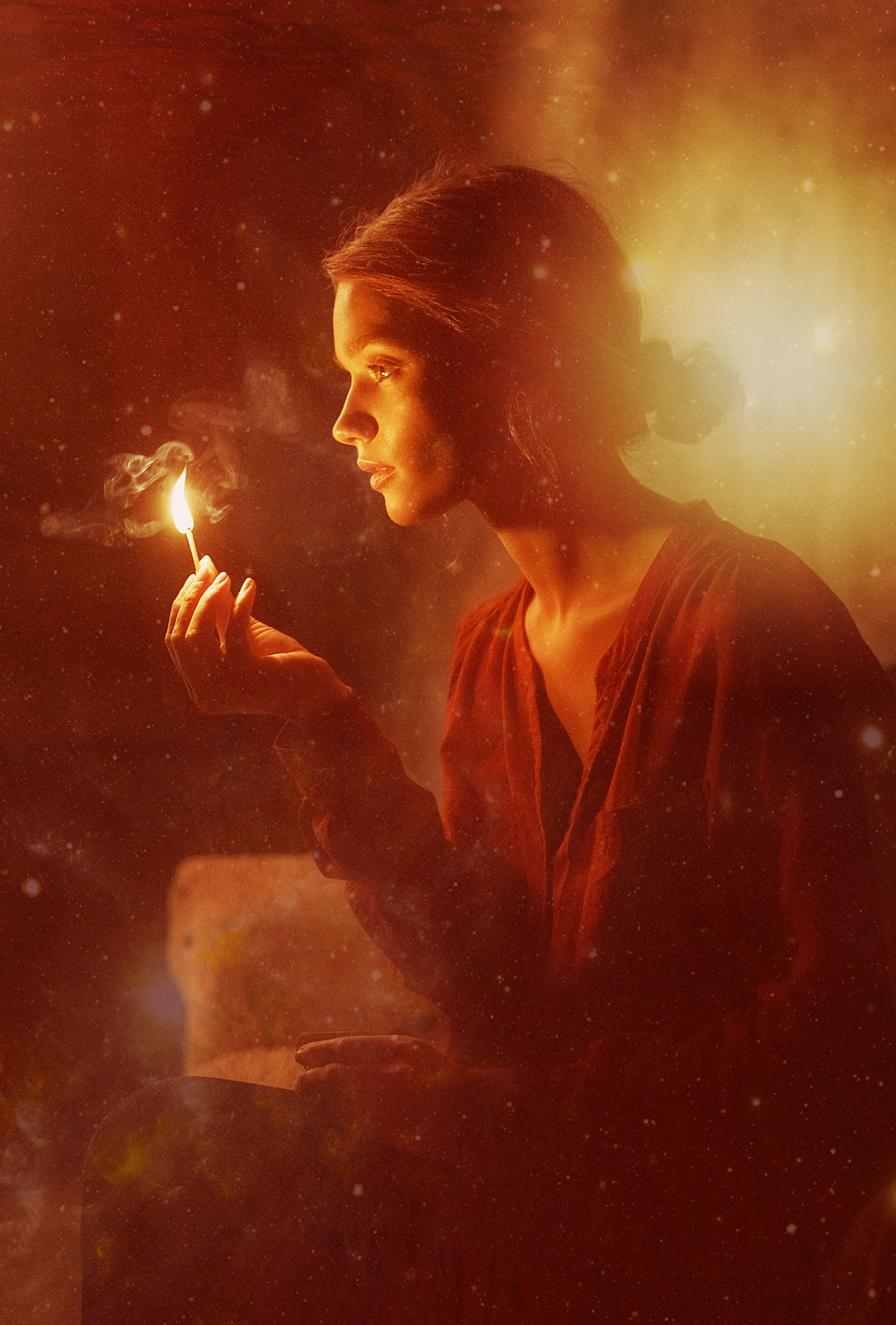
Each issue will invite you to explore your creative practice in whichever way works for you. Experience each issue at your own pace. Take what resonates with you and put the rest aside for another time.
Grab a cup of something lovely and dive in.
MONTHLY THEME
Fire’s Invitation
At its molten core, Fire is all about transformation. Fire is mesmerizing, dangerous, essential, magical, powerful! It can destroy an entire forest in no time at all but yet, intiatite a rebirth deep in the earth. It can begin with a tiny spark and rage into an inferno. It can quietly burn or viciously sear. Fire is also about desire, passion and action. Fire doesn’t sit still or wait for permission. It boldly sweeps across the horizon. Fire wants us to move, shift and yes, transform! It wants us to initiate change! So, when it comes to our creative journey, how can we use the Fire element to propel us forward? Let’s see what Fire has to share with us…
“She has fire in her soul and grace in her heart.”
– Unknown
4 Creative Lessons from the Fire Element
1. BURN AWAY THE OLD
If we hope to change and grow in our creative life we have to become aware of what is not serving us. Fire shines its bright light on these aspects if we open our eyes and see it. Do you avoid your studio because it is so messy? Fire wants you to take action and clean that space up. Now. Not later. Get rid of the stuff that is cluttering up your studio. Do you have repetitive negative thoughts that stop you in your tracks when you go to create? Write all that stuff down, read it out loud. Acknowledge how this is blocking you and speaking untruths. Then (safely) BURN that page up! Bury the ashes in the earth. Turn your back on it and go start that painting with the bold passion that lives within your fire! Identify these old patterns and burn them up. Once we shine light on these things they can not survive. Once we bring our awareness and compassion to the illusions in our creative life that are not assisting us we can transform them with Fire. If you need assistance, or guidance, reach out to a trusted creative friend or mentor but trust that you have within you the power to burn through anything on your path.
“The finest steel has to go through the hottest fire.”
– Richard M. Nixon
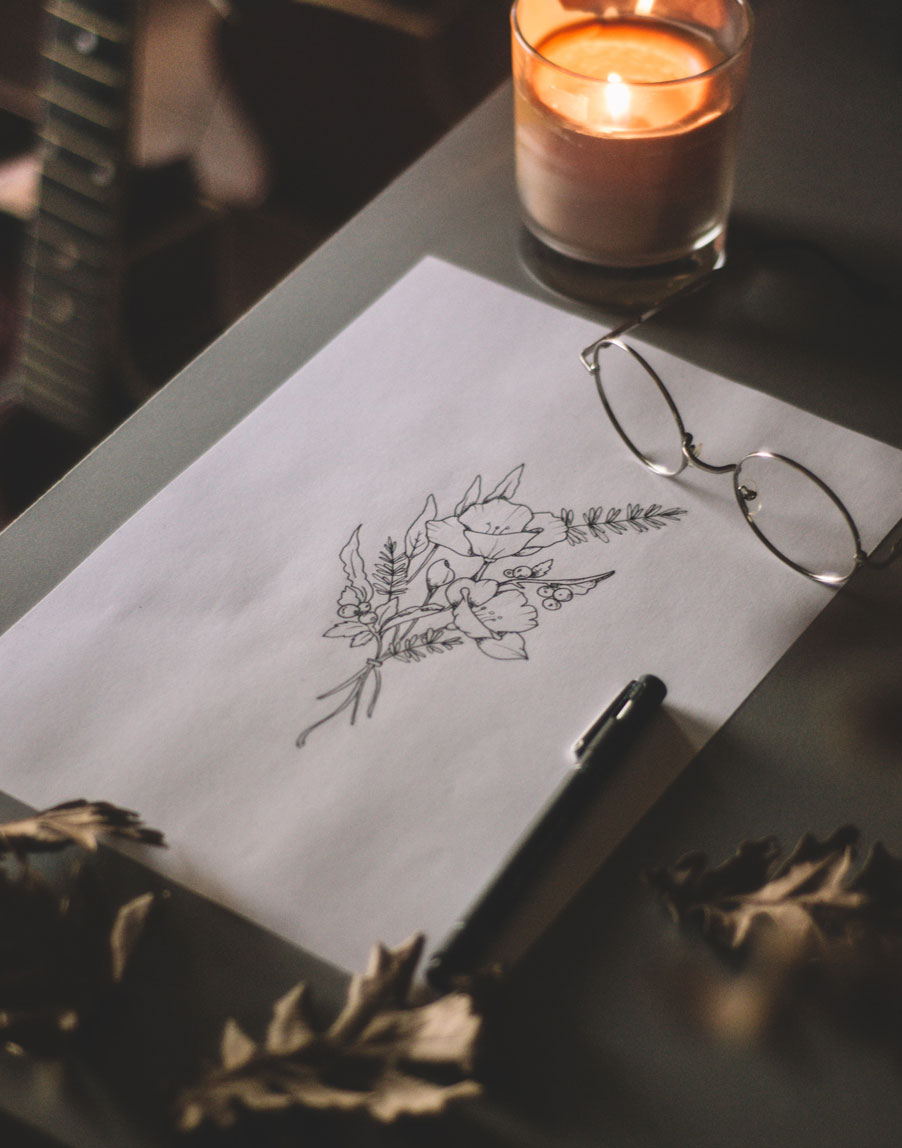
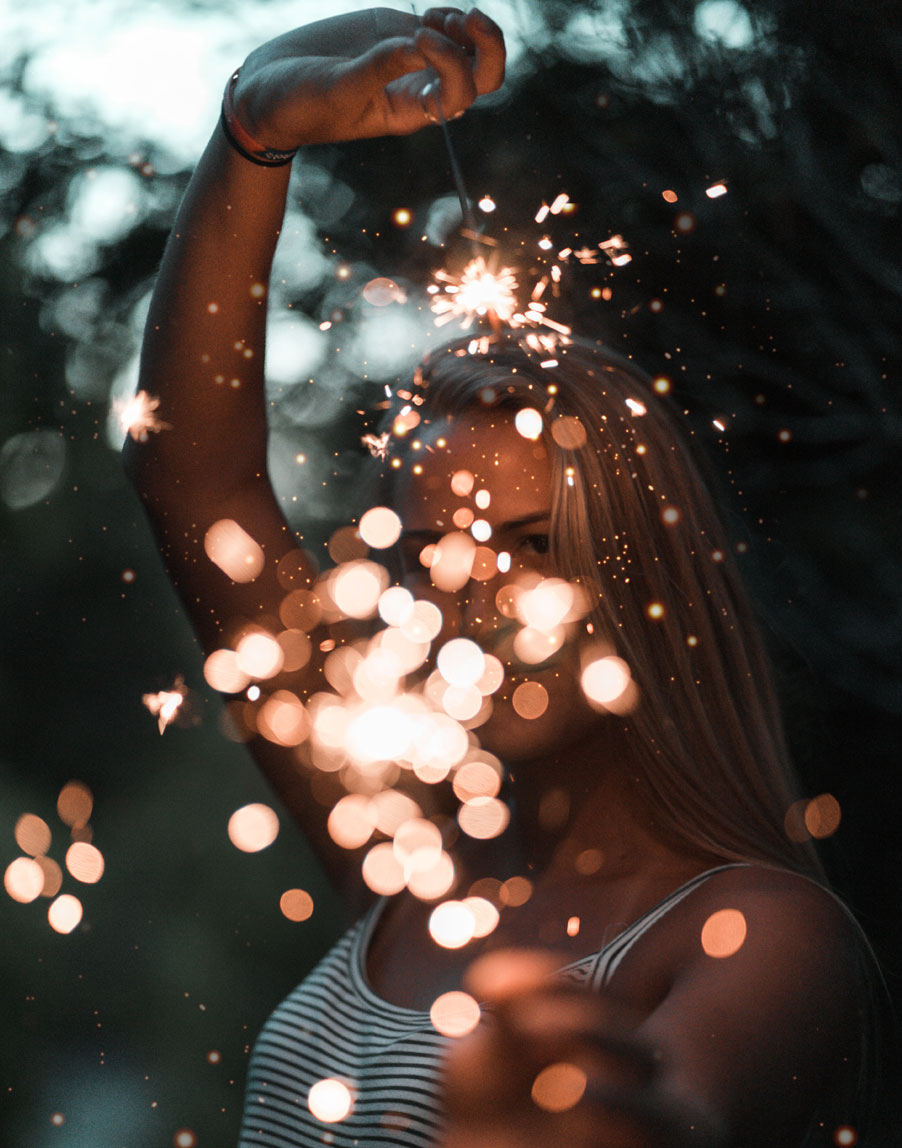
2. FAN THE FLAMES OF YOUR DESIRE
Fire isn’t a shy element. When it wants something, it moves towards it. When it is hungry, it will find something to feed it. As artists, we have this same deep yearning. Embrace this. Acknowledge what you desire for your creative experiences. Do you want to learn more about a particular medium? Do you find yourself physically drawn to this medium? Then lean into this. This is your inner fire leading you. Take a class on that medium. Gather the tools you need. Then with great hunger and longing, work with this medium. Be spontaneous, passionate and curious. Stay in your body and really feel into the physical experience. Don’t be overly cautious or fearful. Like fire, jump the boundaries, both feet in, whirling and wild. Give yourself over to your desire to create, regardless of the outcome.
3. INITIATE YOUR FIRE
Creativity, although containing all elements, is primarily brought about by way of fire. By way of initiation. We can think about an idea all day long (Air), we can gather our tools and prepare our surface (Earth), we can feel the emotions we have about creating something (Water) but only when we take action (Fire) does that creation occur! Fire is the key to manifesting our creativity. So if you find yourself engaging with the other elements except fire it’s time to step up and shift into action! Oftentimes, (this is totally me) we get stuck in the thinking or concepting stage of creation (Air) and we overthink our process. We try to make a step by step plan to ensure success. (eye roll). We know, intuitively, that this is NOT how creativity works. Sure you might finally make something from this perspective but you might find yourself feeling very unsatisfied by the experience. This is because we never lit the flames of our imagination, passion and creative nature. The piece might be academically acceptable but our souls are left yearning for more. We have to intentionally initiate fiery action. Sometimes simply lighting a candle near your workspace can remind us to do this! Invite fire in.
4. WITNESS YOUR GLORIOUS TRANSFORMATION
Witness your glorious transformation – As I mentioned before, fire is all about transformation. It is alchemical. Something exposed to fire will inevitably be changed. In this same way, your creativity is transforming your life. It may be subtle or it may be dramatic but know that you are changing. Being an artist, creating art, unveils so many aspects of ourselves – our passions, our fears, our wounds, our tenderness, our joy. Like glowing molten metal in the fiery forge, these things shape us, they transform us. Creativity sparks the flame. Witness how you’ve grown on your creative journey. Celebrate it! How have you shifted? Where have you expanded? What have you released?
Fire's Invitation
I love this poem by Emily Pauline Johnson, it speaks to the regenerating power of fire and the incredible strength of the human spirit.
Fire-Flowers
And only where the forest fires have sped,
Scorching relentlessly the cool north lands,
A sweet wild flower lifts its purple head,
And, like some gentle spirit sorrow-fed,
It hides the scars with almost human hands.
And only to the heart that knows of grief,
Of desolating fire, of human pain,
There comes some purifying sweet belief,
Some fellow-feeling beautiful, if brief.
And life revives, and blossoms once again
-Emily Pauline Johnson
Fire Flowers
CREATIVE INTUITION
with Elizabeth Cooper
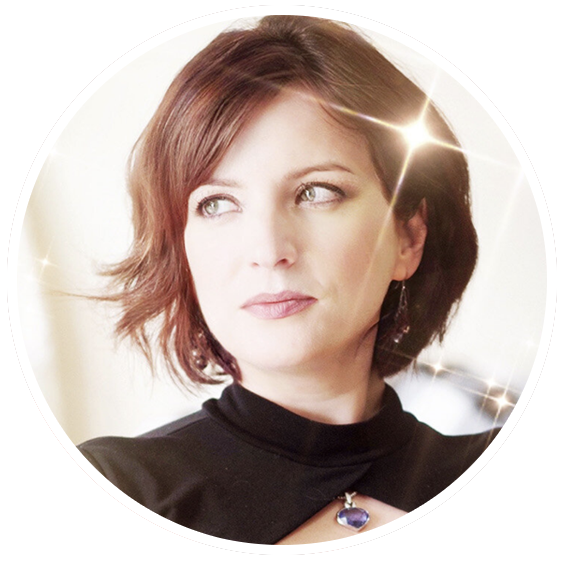
I’m excited to announce that my dear friend and fellow artist will be a regular contributor to the Studioworks Journal! She is my go-to when learning more about my intuition and integrating it into my creative practice. This month she’s going to guide us through the Fire suit of the Tarot – The Wands. Enjoy as she reveals the symbols, stories and significance of this powerful suit.
The Fire Element in Tarot: An Artist’s Guide
If you play with fire, you’re going to get burned…” the saying goes.
When it comes to incorporating the element of fire into our creative practice, that’s a good thing.
And just like that, after exploring water, earth, and air through the lens of the tarot, we’ve come to the final element: fire. In tarot, fire corresponds to the suit of wands, which, I’d argue, is the suit most pertinent to anyone who follows an artist’s path.
Fire is scorching, blazing, unforgiving. It’s unpredictable and wild, difficult to tame and often feared for its destructive properties. It can lay waste to anything in its wake — but it can also help us cook, forge tools, and warm our bodies in cold weather. It’s the “heart of the home,” the element around which communities gather. Fire kept our ancestors safe at night just as effectively as it destroyed entire villages.
There’s one theme we’ve seen repeatedly through these explorations of the elements, and that’s the paradoxical nature of each one. Boxing in any element as “good” or “bad” means intentionally denying the other side of the coin. It is this contrast that makes the elements so incredibly powerful.
Typically, fire is thought to possess a fierce masculine energy due to its aggressive tendencies. It’s deeply connected to passion of all kinds: romantic, sexual, creative, and energetic. It also symbolizes other typically masculine-labelled aspects, such as anger, lust, ambition, drive, and raw willpower.
Fire purifies, cleanses, and renews, which is why it’s been used in rituals throughout human history. Its immense and awe-inspiring power tends to burn with hot, devouring energy and then fizzle out quickly.
The Fire in Tarot
In tarot, the suit of wands is symbolic of the principles associated with the element of fire: creativity, raw energy, primal instincts, inspiration, spirituality, intuition, expansion, imagination, originality, and the initial sparks of all human output.
Every tarot card serves to hold up a mirror to our own psyche, allowing us to reflect on what we see within the themes of each card. When we gaze into a wand card, we look deep into our own artists’ souls. We can get a glimpse at what’s important to us, our values, egos, self-concept, personalities, and our way of showing up in the world. These are glistening reflections of our creator auras, brimming with powerful energy that connects with the way we find purpose and meaning in our lives.
Conversely, the shadow aspect of the wands cards points to ways we delude ourselves and the stories we tell that create limitations and throw up creative blocks. These inner blocks can also manifest as a feeling of malaise… the “blahs” surrounding our creative work. A general sense of lack of purpose or direction and frequently asking yourself, “What’s the point?” is another way the negative side of the wands suit can manifest in our lives. As well, be conscious of a tendency to push forward at all costs – unaware that you may be leaving a swathe of destruction in your wake.
Fire Elemental Correspondences
Suit: Wands (aka: clubs, staves, sceptres, batons).
Court cards: Knights (aka: brothers, lords, 2).
Major arcana: The Emperor, Wheel of Fortune, The Devil, The Tower, The Sun.
Astrological signs: Leo, Sagittarius, Aries.
Attributes: Active, masculine.
Direction: South
Season: Fall
Sense: Taste
Statement: “I crave…”
Colors: Red, orange, yellow.
The Artist as a Fire Elemental
At their best, the wands represent the power source that fuels our energy. This is the propellant that imbues our psyches with charisma, intuitive empathy, warmth, and spiritual discernment.
When you find yourself looking for meaning and direction, the wands cards will be there to point the way. Though no tarot card can ever singularity determine your next step, you’ll find clues in every wand card you pull. For example, perhaps you find yourself drawn to the animated image of a fire elemental, aggressively taking a stance against wrongdoing. Or maybe you keep glancing at the eight wands hurling themselves through the air, and you feel a sudden need to join them – to make fast, unhindered progress on a project with a sense of freedom spurring you on.
Fire is closely connected to the passion you feel behind the drive to make your art. Think of it as the spark that lights your inspiration. But just like any fire, that initial burst of heat needs fuel to keep burning. That’s where motivation comes in and why it can sometimes feel challenging to sustain the level of creative output you wish to have.
Knowing this, I’d like to invite you to go a little deeper into your elemental nature.
Imagine the many ways you, as an artist, embody the aspects of the element of fire. Ask yourself questions such as:
- Do I feel a strong connection between my art and my life purpose?
- Am I drawn to express my inner power, even if I’m afraid to do so?
- Do I often destroy an art piece only to reuse it to create something new?
- Am I at a point that calls for transformation in my life?
- Does inspiration come to me fast and hot, urging me to create something right then and there?
If the answer to most of those questions is ‘yes,’ then I encourage you to lean into your fiery nature.
Connecting to the Element
The best way to connect to an element is to observe it in its natural form. Here are just a few ideas to help you get in touch with the essence of fire:
- Light a fire (either outside in the form of a bonfire or safely in a fireplace).
- Burn a candle.
- Sunbathe in the glow of the afternoon sun.
- Strike a match.
- Burn a piece of paper in a heat-safe container. Once cooled, run your fingers through the ashes.
- Use charcoal in your next art piece.
- Light incense.
- Dance or engage in exercises that cause heat to rise in your body.
- Consume a warm food (like soup or stew) or drink (pumpkin spice latte, anyone?).
After trying any of the suggestions above, pull out all the suits of wands cards in your deck and lay them out in front of you. Then, take note of the fire symbolism in each card.
What do you notice now? Is the desert flat or made up of giant dunes? Does the sun blaze bright and powerful, or is it a small disk in the distance? How will you allow your passion to direct you to your greater purpose the next time you reach for your art supplies?
Make a note of any new insights. Your understanding of both the suit of wands and the element of fire will expand as you open yourself to the spiritual guidance you receive through your art practice.
Elizabeth Cooper is an artist, mentor, and creative magic maker. She teaches languishing creatives how to forge a powerful connection to their inner wisdom so they can identify, express, and share their sacred gifts with the entire world — and unselfconsciously around the dinner table. Learn more about her work at: www.flutterandsprout.com
“What you wish to ignite in others, you must first burn within yourself.”
– Charlotte Brontë
Fire Artist PROMPT:
- Create an expressive and spontaneous piece using only charcoal (a tool made by fire). Light a candle before you begin and honor the fire within you. Work quickly and fiercely – like fire!
WORD OF THE MONTH
Initiate
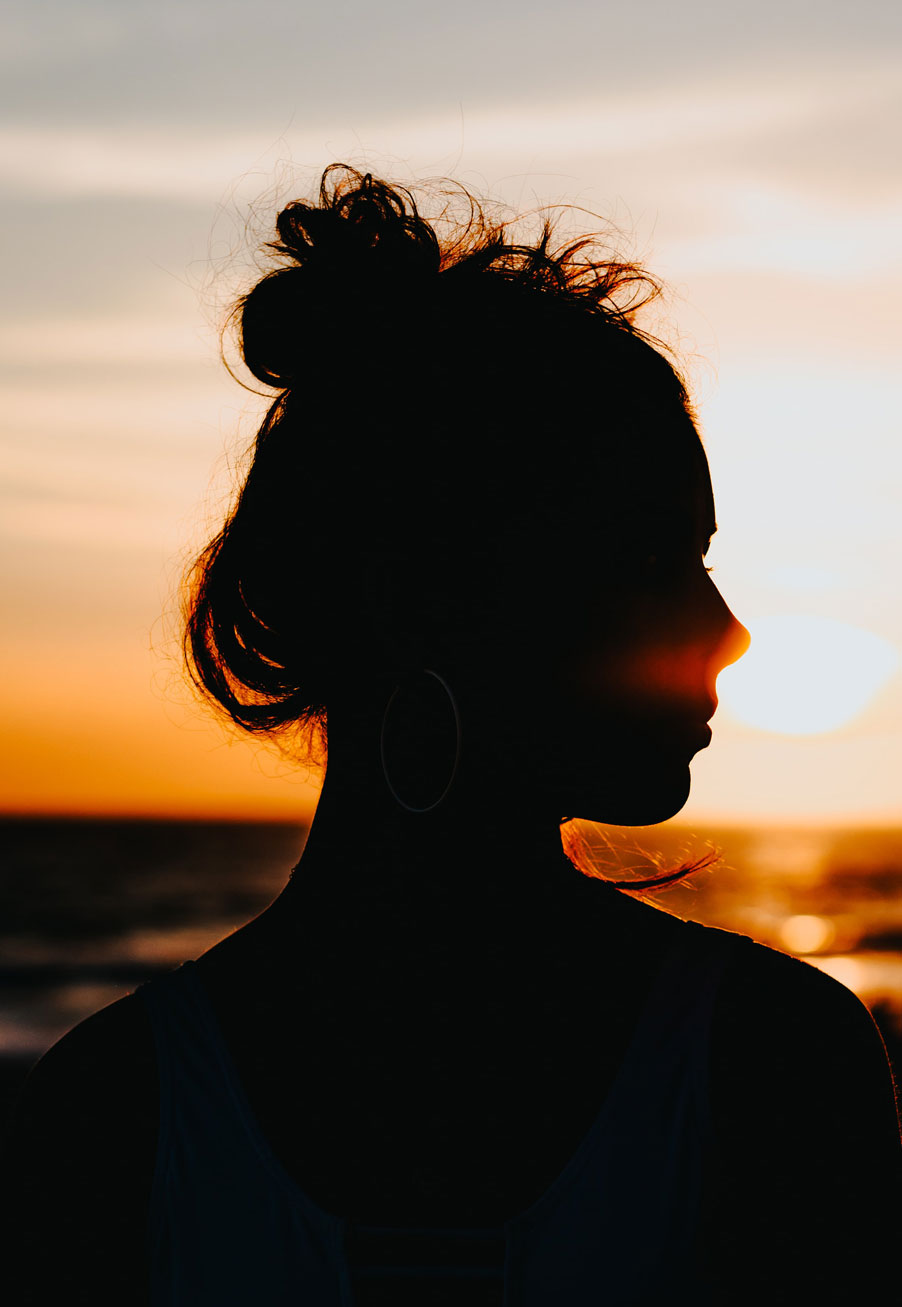
Initiate – to cause the beginning of something : to start or begin
No work of art, no creation can be birthed without first initiation. Without initiating action. In fact, I think many creations die on the wind right before this critical part. How many times have we stewed on a fabulous idea, dreamt about it, wrote about it, even prepared our creative space and tools, only to walk away. The canvas, left blank. The clay, untouched. A light goes out. In my experience, sadly, this has happened so many times. And why does this happen?
Self-doubt. Fear.
Yeah. Ugh. While this is absolutely human and happens to all creatives we have to be cognizant that if we continue to do this we won’t move past this stage. If we don’t actualize our creativity it retreats and often becomes resentment, frustration and apathy. We lose our embrace with our creative selves and a lackluster shell remains. So we must remain vigilant of this pattern. Fight for your creativity. Keep your flame lit and boldly walk through the discomfort of initiation. Let the fire embolden you and burn away the resistance. It is your divine right to create. Don’t let anyone or anything stand in your way.
“The artist must create a spark before he can make a fire and before art is born, the artist must be ready to be consumed by the fire of his own creation.”
– Auguste Rodin
Word of the Month - Initiate
Writing Prompt & Card Spread
Connecting to the Fire element with Kiala givehand

This month, I’m so delighted to share another gorgeous, insightful card/journal spread from my dear friend, Kiala Givehand! She also has a wonderful audio guide on engaging in a simple fire ritual to further your connection with this powerful creative element!
My deep gratitude to Kiala for this offering to our community!
Fire Ritual
To learn more about Kiala and see all the beautiful resources and creative classes she has available, visit her website below…
Your Power: Solar Plexus Chakra Meditation
WITH RACHEL HILLARY
This beautiful, powerful meditation connects us to our Solar Plexus Chakra, where our fire lives. It can be a reminder to connect to your inner power and go forth and create! So get comfy and give yourself this inspiring and supportive experience.
Rachel will share a little about this experience –
This meditation takes place around a beautiful campfire in the middle of the woods. To the sound of nature and our fire burning. Here we will spark the flame of confidence within you, and allow your light within to shine brightly outwards.
xo,
Rachel
Your Power: Solar Plexus Chakra Meditation
You can download more meditations and connect with Rachel here…
Monthly Affirmation
ELEMENTAL MYTHOLOGY
I don’t know about you but mythology has always been an inspiration to my work, so as we move through the Elements I thought it would be fun to explore a few of the associated Elemental Goddesses across cultures. Fire, as you can imagine, has MANY deities but I am especially drawn to Pele – the Hawaiian Fire Goddess. I have always loved this magical land and so I thought I would research more about Pele and her story.
Pele the Fire Goddess
In Hawaiian religion, Pele is the goddess of volcanoes and fire and the creator of the Hawaiian Islands. Often referred to as “Madame Pele”, she is a well-known deity within Hawaiian mythology and is notable for her contemporary presence and cultural influence as an enduring figure from ancient Hawaii.
In different stories talking about the goddess Pele, she was born from the female spirit named Haumea. This spirit is important when talking about Hawaiʻi’s gods as she descended from Papa, or Earth Mother, and Wakea, Sky Father, both descendants of the supreme beings. Pele is also known as “She who shapes the sacred land,” known to be said in ancient Hawaiian chants.
Kīlauea is a currently active volcano that is located on the island of Hawaiʻi and is still being extensively studied. Many Hawaiians believe Kilauea to be inhabited by a “family of fire gods,” one of the sisters being Pele who is believed to govern Kilauea and is responsible for controlling its lava flows. There are several traditional legends associated with Pele in Hawaiian mythology. In addition to being recognized as the goddess of volcanoes, Pele is also known for her power, passion, jealousy, and capriciousness. She has numerous siblings, including Kāne Milohai, Kamohoaliʻi, Nāmaka, and numerous sisters named Hiʻiaka, the most famous being Hiʻiakaikapoliopele (Hiʻiaka in the bosom of Pele). They are usually considered to be the offspring of Haumea. Pele’s siblings include deities of various types of wind, rain, fire, ocean wave forms, and cloud forms. Her home is believed to be the fire pit called Halemaʻumaʻu at the summit caldera of Kīlauea, one of the Earth’s most active volcanoes, but her domain encompasses all volcanic activity on the Big Island of Hawaiʻi
Legend told that Pele herself journeyed on her canoe from the island of Tahiti to Hawaiʻi. When on her journey, it was said she tried to create her fires on different islands, but her sister, Nāmaka, was chasing her, wanting to put an end to her. In the end, the two sisters fought each other and Pele was killed. With this happening, her body was destroyed but her spirit lives in Halemaʻumaʻu on Kilauea. They say, “Her body is the lava and steam that comes from the volcano. She can also change form, appearing as a white dog, old woman, or beautiful young woman.”
In addition to her role as goddess of fire and her strong association with volcanoes, Pele is also regarded as the “goddess of the hula.” She is a significant figure in the history of hula because of her sister Hiʻiaka, who is believed to be the first person to dance hula. As a result of Pele’s significance in hula, there have been many hula dances and chants dedicated to her and her family. With hula being dedicated to Pele, the dance is often performed in a way that represents her intense personality and the movement of volcanoes.
Symbols: fire, volcanos, lava
Colors: red, orange, yellow, white
Crystals & Gems: carnelian, obsidian, peridot
Message from Pele – “Be honest with yourself: What is your heart’s true desire?
See beautiful artwork dedicated to Pele here…
“It only takes one spark to light a fire within you.”
– Unknown
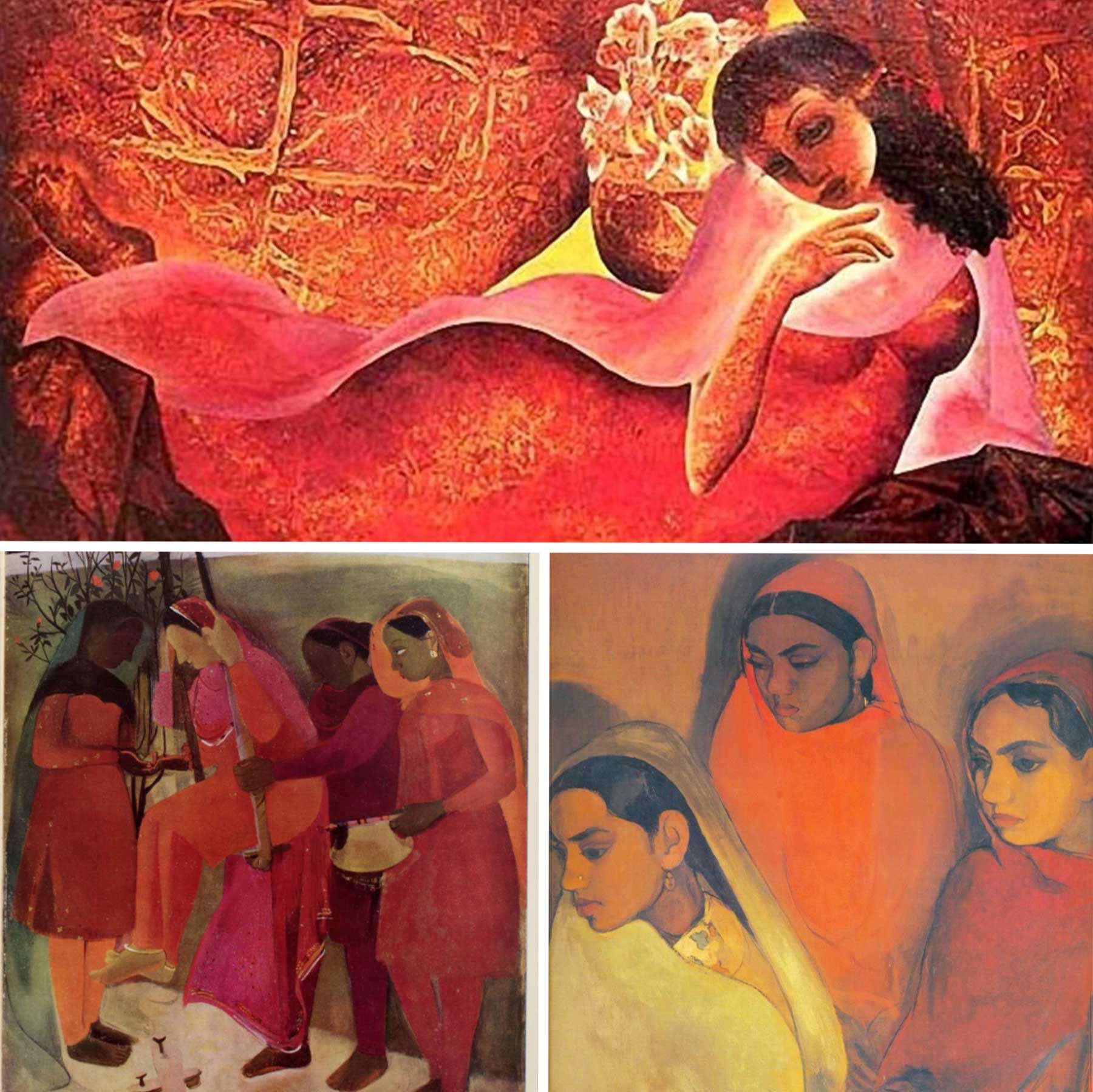
Color Palette of the Month
This month, I couldn’t help but be inspired by our Master Artist – Amrita Sher-Gil. Her vibrant use of reds, oranges and other warm tones really resonated with our theme. Her earthy rich palette and bold artwork exudes a fiery energy. So yes, this month, pull out all those warm tones and embrace their beauty! Work with the colors of fire to further connect to this element. Think blazing flames and firelit sunsets! I don’t personally often work with these hot colors but what a delightful way to initiate change and transformation into our work!

“I survived because the fire inside me burned brighter than the fire around me.”
– Joshua Graham
Color Palette
Fire Artist PROMPT:
- Grab your favorite hot colors, red, hot pink, orange, yellow and create a simple expression of the energy of fire inside you. Don’t overthink it. Feel into the process and have fun!
Master Artist Guide
Amrita Sher-Gil
This month I’m so very excited to bring you the work and story of the Hungarian – Indian artist, Amrita Sher-Gil. I have never studied her before but was immediately drawn to her richly hued work. Her figurative work is evocative and story-telling, drawing us in and encouraging the viewer to more deeply understand what is occurring in the piece. As mentioned, I love her use of red. This color, in Hindu tradition, represents purity and sensuality. Her paintings exude both these qualities and her intriguing life, although short lived (she died at age 28), was full of fiery passion and ambition! So let’s learn more about this incredible artist….
“When a picture isn’t realized, you pitch it in the fire and start another one! “
– Paul Cezanne
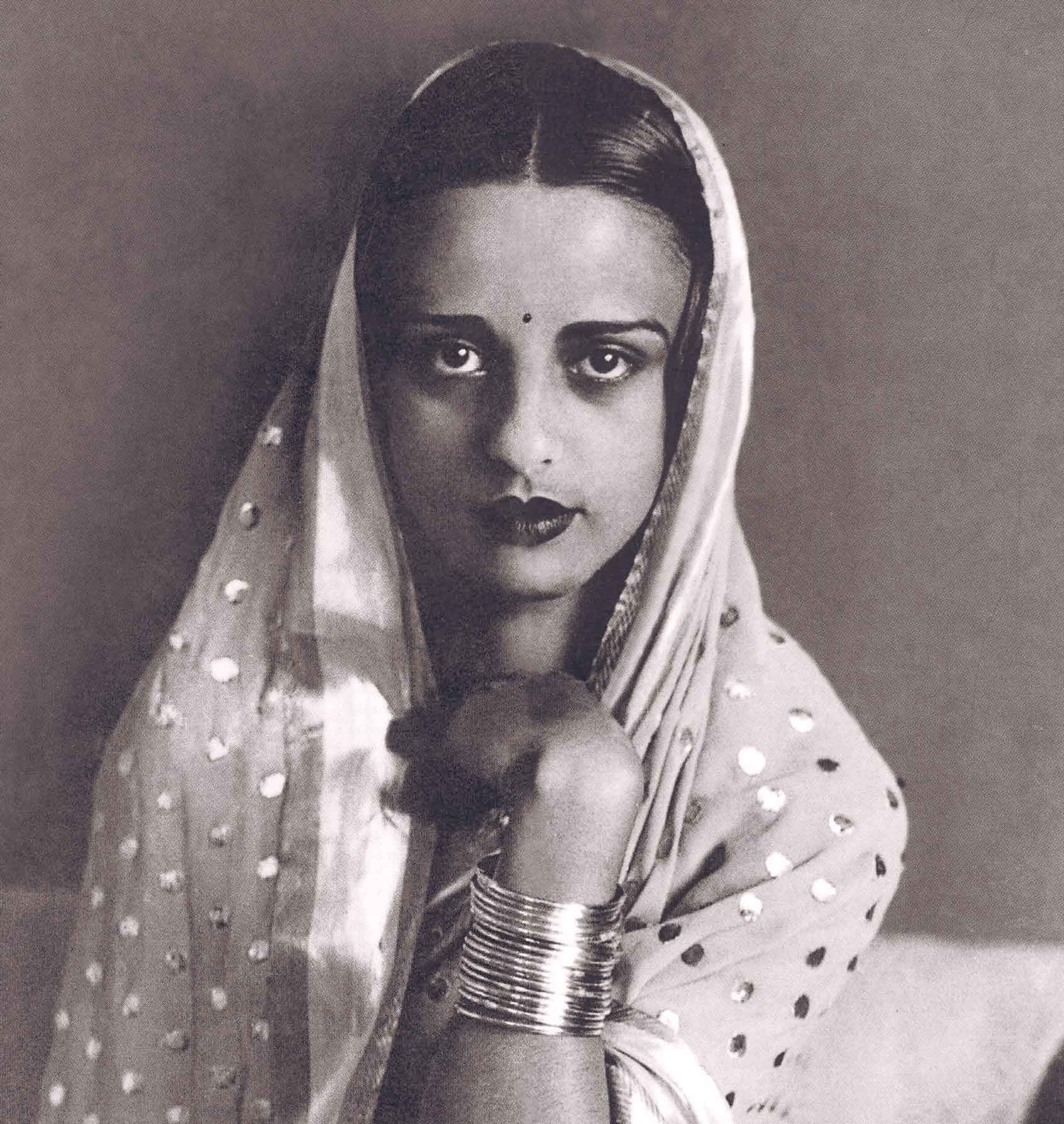
OVERVIEW
Amrita Sher-Gil was born on the 30th of January 1913 and passed on the 5th of December 1941 was a Hungarian-Indian painter. She has been called “one of the greatest avant-garde women artists of the early 20th century” and a “pioneer” in modern Indian art. Drawn to painting from an early age, Sher-Gil started getting formal lessons in art, at the age of eight. She first gained recognition at the age of 19, for her oil painting titled Young Girls (1932).
Sher-Gil traveled throughout her life to various countries including Turkey, France, and India, deriving heavily from pre colonial Indian art styles and its current culture. Sher-Gil is considered an important painter of 20th-century India, whose legacy stands on a level with that of the pioneers from the Bengal Renaissance. She was also an avid reader and a pianist. Sher-Gil’s paintings are among the most expensive by Indian women painters today, although few acknowledged her work when she was alive.
Early life and education
Amrita Sher-Gil was born on 30 January 1913 in Budapest, Hungary, to Umrao Singh Sher-Gil Majithia, a Punjabi Sikh aristocrat and a scholar in Sanskrit and Persian, and Marie Antoinette Gottesmann, a Hungarian-Jewish opera singer who came from an affluent bourgeois family. Her parents first met in 1912, while Marie Antoinette was visiting Lahore. Her mother came to India as a companion of Princess Bamba Sutherland, the granddaughter of Maharaja Ranjit Singh.
Sher-Gil was the elder of two daughters; her younger sister was Indira Sundaram, mother of the contemporary artist Vivan Sundaram. She spent most of her early childhood in Budapest. She was the niece of Indologist Ervin Baktay. Baktay noticed Sher-Gil’s artistic talents during his visit to Shimla in 1926 and was an advocate of Sher-Gil pursuing art. He guided her by critiquing her work and gave her an academic foundation to grow on. When she was a young girl she would paint the servants in her house, and get them to model for her. The memories of these models would eventually lead to her return to India.
Her family faced financial problems in Hungary and in 1921 they moved to Summer Hill, Shimla, India. Though she had already been painting since the age of five, she started learning painting formally at age eight. Sher-Gil started getting formal lessons in art from Major Whitmarsh, who was later replaced by Beven Pateman. In Shimla, Sher-Gil lived a relatively privileged lifestyle. As a child, she was expelled from her convent school for declaring herself an atheist.
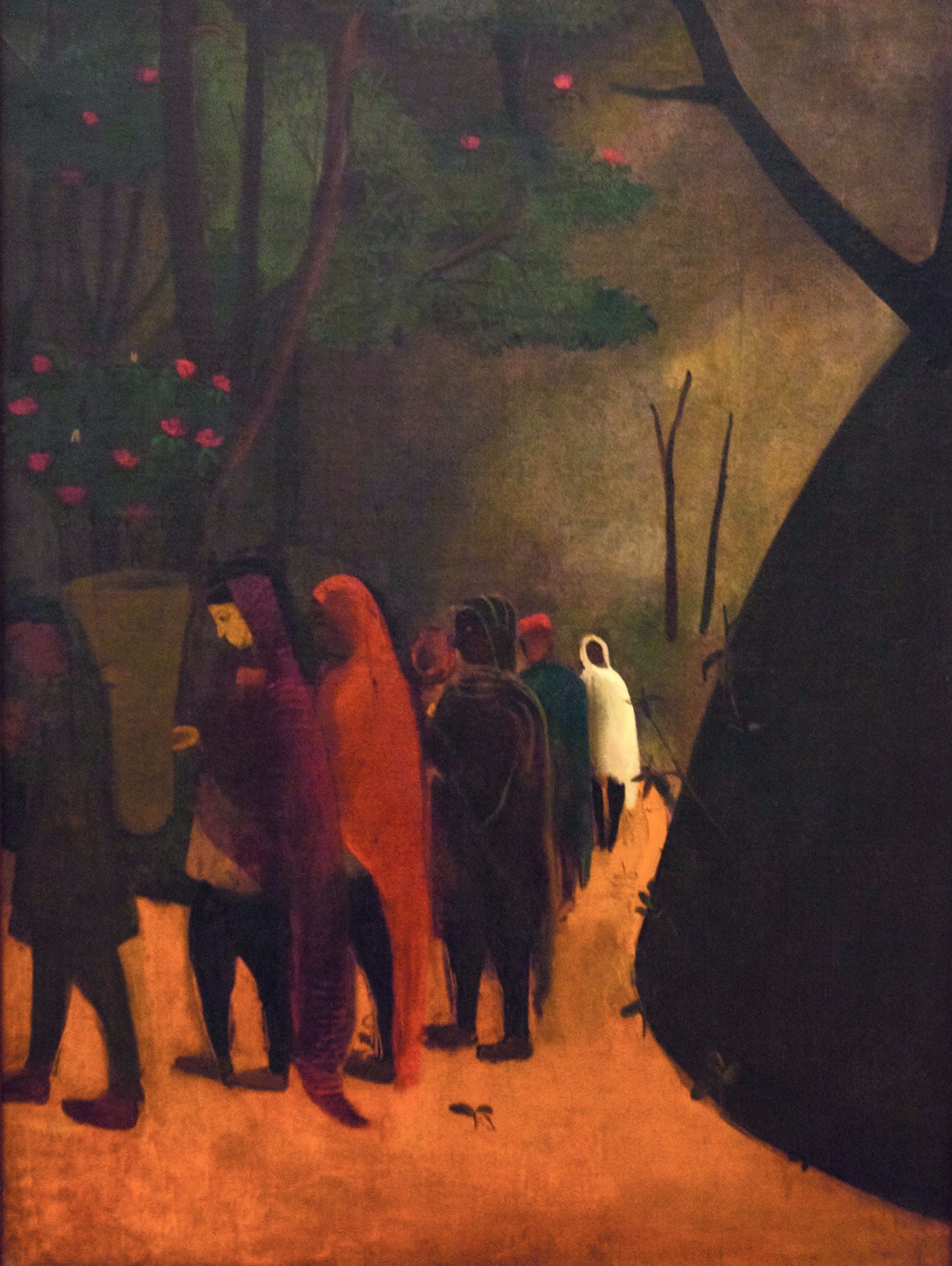
Hill Scene – 1938
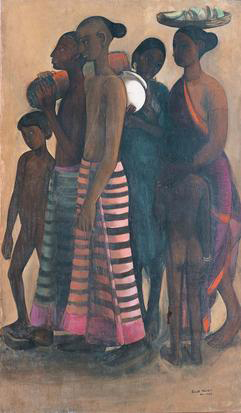
South Indian Villagers Going to Market – 1937
In 1923, Marie (her mother) came to know an Italian sculptor, who was living in Shimla at the time. In 1924, when he returned to Italy, she too moved there, along with Amrita, and got her enrolled at Santa Annunziata, an art school in Florence. Though Amrita didn’t stay at this school for long and returned to India in 1924, it was here that she was exposed to works of Italian masters.
At sixteen, Sher-Gil sailed to Europe with her mother to train as a painter in Paris, first at the Académie de la Grande Chaumière under Pierre Vaillent and Lucien Simon (where she met Boris Taslitzky) and later at the École des Beaux-Arts (1930–34). She drew inspiration from European painters such as Paul Cézanne and Paul Gauguin, while working under the influence of her teacher Lucien Simon and through the company of artist friends and lovers like Tazlitsky. While in Paris, she is said to have painted with a conviction and maturity rarely seen in a 16-year old.
Career
1932–1936:
EARLY CAREER, EUROPEAN AND WESTERN STYLES
Sher-Gil’s early paintings display a significant influence of the Western modes of painting, more specifically, the post-impressionism style. She practiced a lot in the Bohemian circles of Paris in the early 1930s. Her 1932 oil painting, Young Girls, came as a breakthrough for her; the work won her accolades, including a gold medal and election as an Associate of the Grand Salon in Paris in 1933. She was the youngest ever member, and the only Asian to have received this recognition.
Her work during this time included a number of self-portraits, as well as life in Paris, nude studies, still life studies, and portraits of friends and fellow students. The National Gallery of Modern Art in New Delhi describes her self-portraits she made while in Paris as “[capturing] the artist in her many moods – somber, pensive, and joyous – while revealing a narcissistic streak in her personality.”
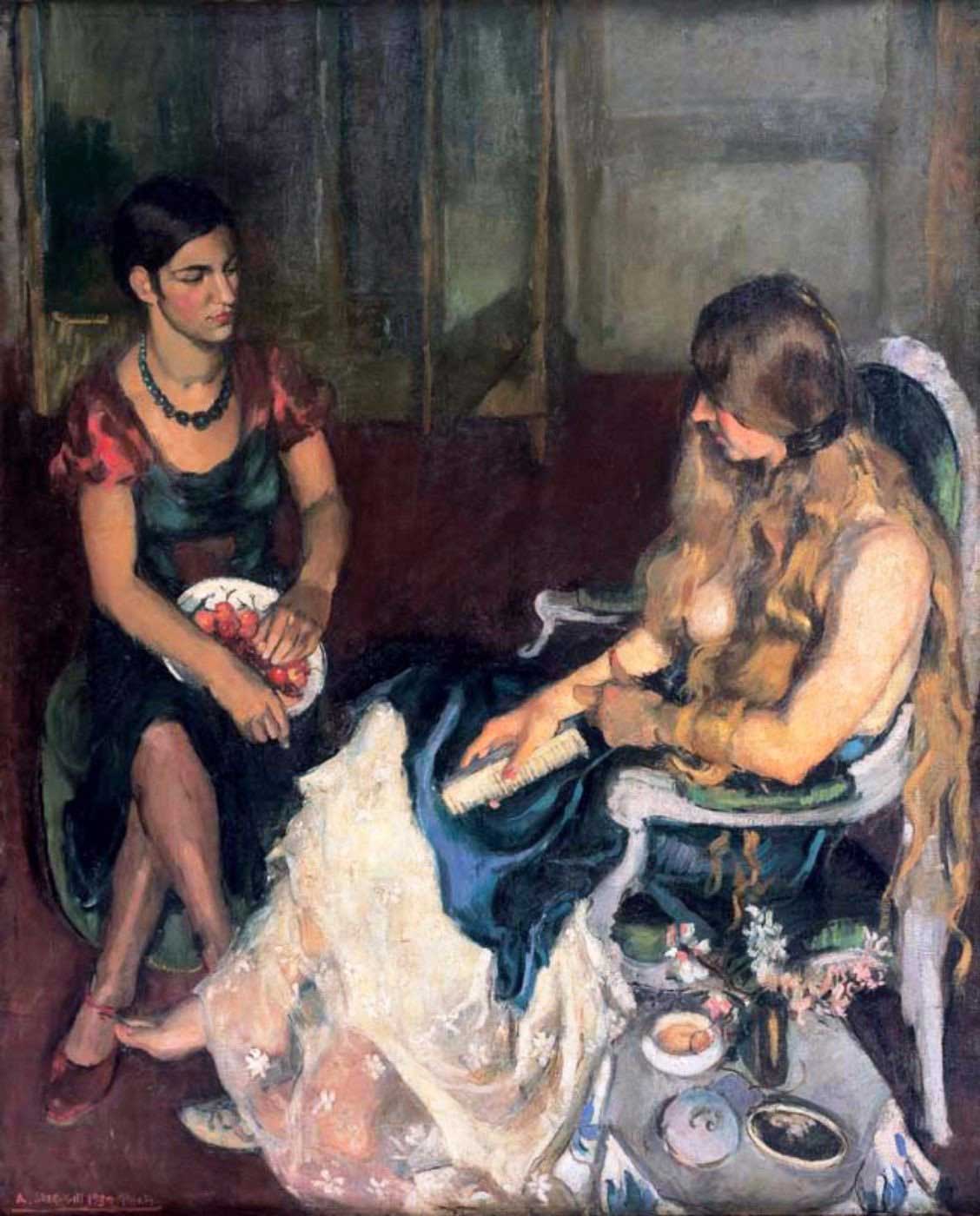
Young Girls – 1932
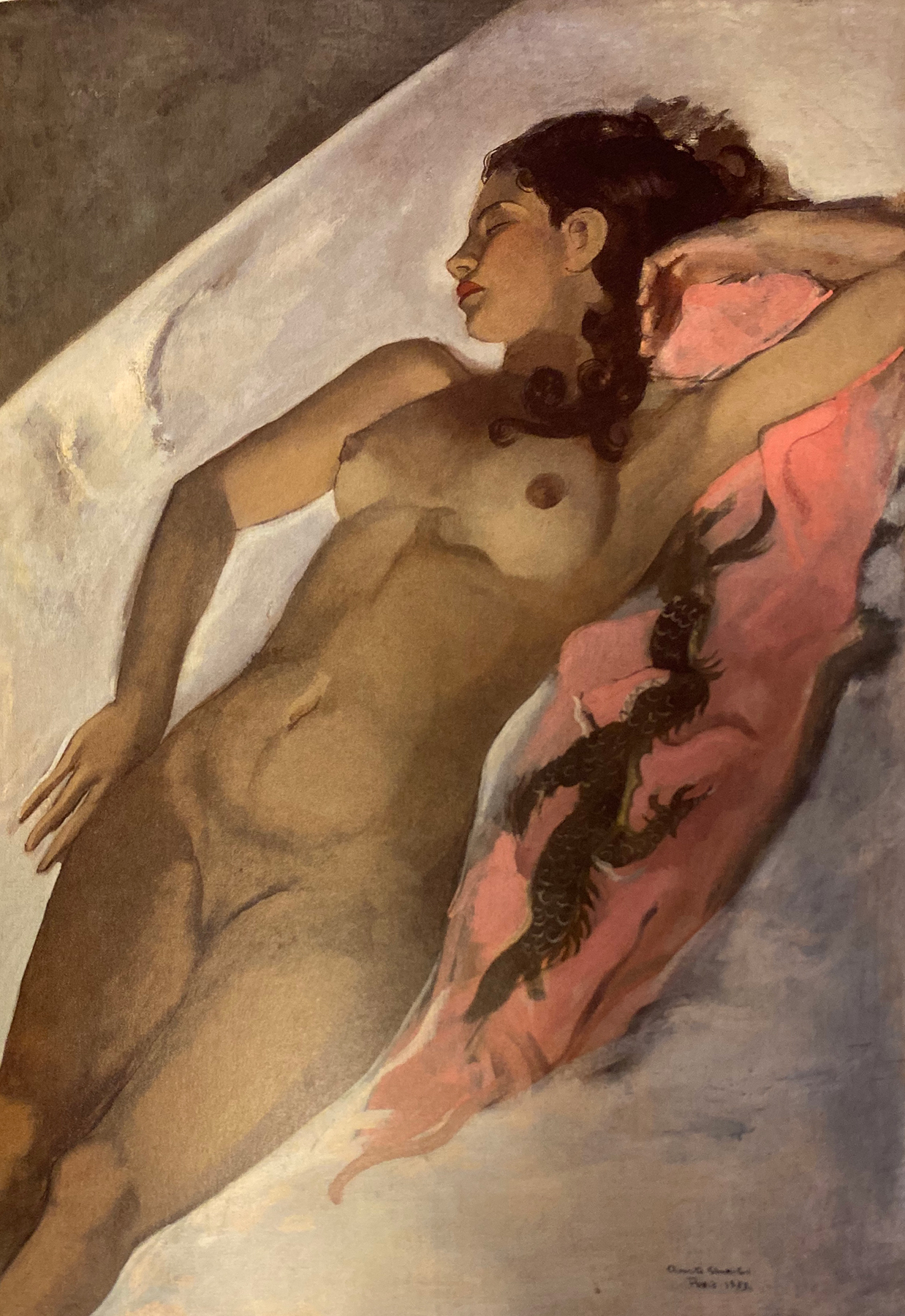
Sleep – 1932
When she was in Paris, one of her professors often said that judging by the richness of her colouring Sher-Gil was not in her element in the west, and that her artistic personality would find its true atmosphere in the east. In 1933, Sher-Gil “began to be haunted by an intense longing to return to India feeling in some strange way that there lay her destiny as a painter.” Sher-Gil returned to India at the end of 1934.
In May 1935, Sher-Gil met the English journalist Malcolm Muggeridge, then working as assistant editor and lead writer for The Calcutta Statesman. Both Muggeridge and Sher-Gil stayed at the family home at Summer Hill, Shimla and a short intense affair took place during which she painted a casual portrait of her new lover, the painting now with the National Gallery of Modern Art in New Delhi. By September 1935 Amrita saw Muggeridge off as he traveled back to England for new employment. She left herself for travel in 1936 at the behest of an art collector and critic, Karl Khandalavala, who encouraged her to pursue her passion for discovering her Indian roots.
In India, she began a quest for the rediscovery of the traditions of Indian art which was to continue till her death. She was greatly impressed and influenced by the Mughal and Pahari schools of painting and the cave paintings at Ajanta.
1937–1941:
LATER CAREER, INFLUENCE OF INDIAN ART
Later in 1937, she toured South India and produced her South Indian trilogy of paintings Bride’s Toilet, Brahmacharis, and South Indian Villagers Going to Market following her visit to the Ajanta Caves, when she made a conscious attempt to return to classical Indian art. These paintings reveal her passionate sense of color and an equally passionate empathy for her Indian subjects, who are often depicted in their poverty and despair.
By now the transformation in her work was complete and she had found her ‘artistic mission’ which was, according to her, to express the life of Indian people through her canvas. While in Saraya Sher-Gil wrote to a friend thus: “I can only paint in India. Europe belongs to Picasso, Matisse, Braque…. India belongs only to me”. Her stay in India marks the beginning of a new phase in her artistic development, one that was distinct from the European phase of the interwar years when her work showed an engagement with the works of Hungarian painters, especially the Nagybanya school of painting.
Sher-Gil married her Hungarian first cousin, Dr. Viktor Egan when she was 25. Egan had helped Sher-Gil obtain abortions on at least two occasions prior to their marriage. She moved with him to India to stay at her paternal family’s home.
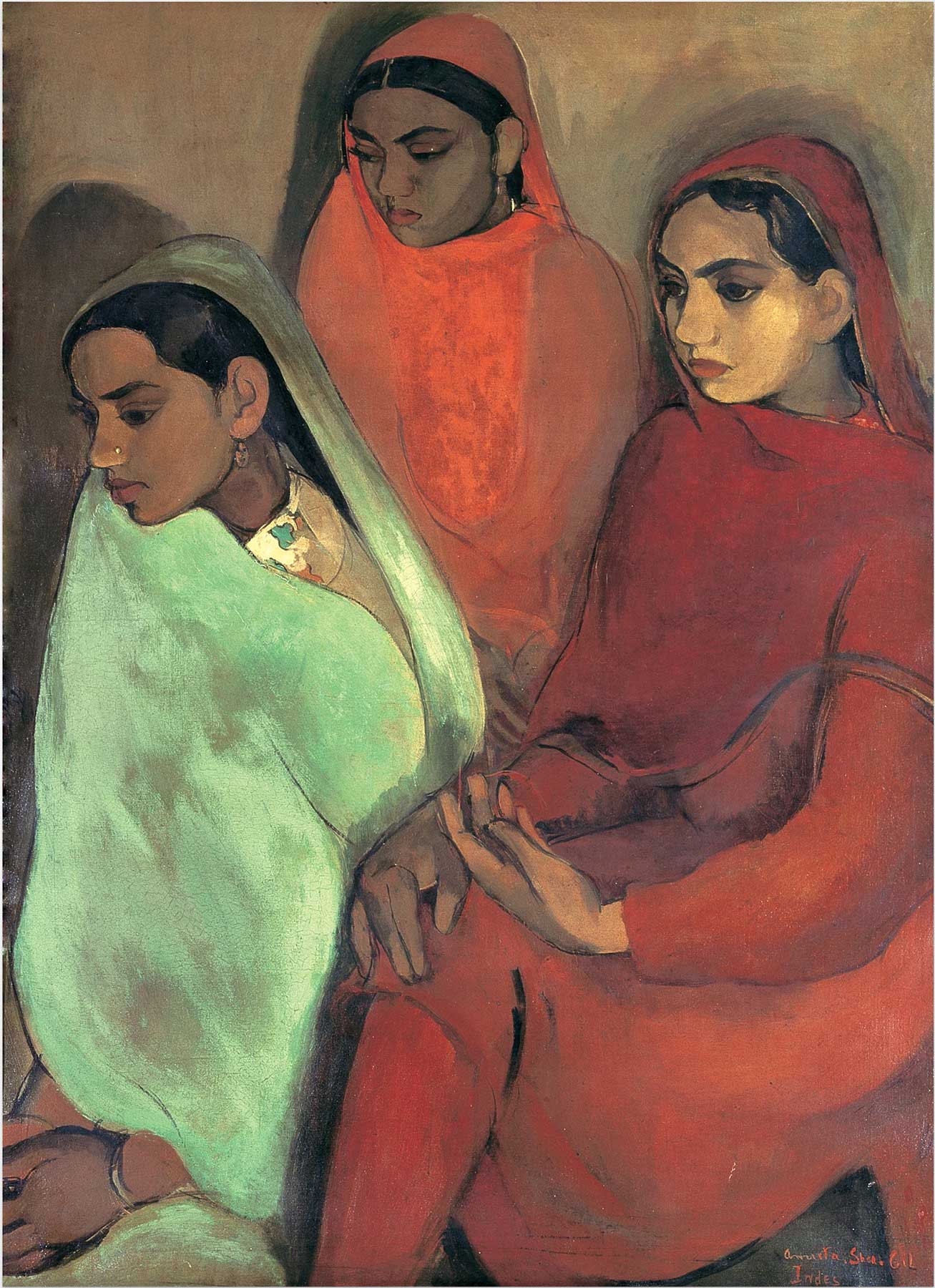
Three Girls – 1935
She began her second phase of painting which is equal in its impact on Indian art with the likes of Rabindranath Tagore and Jamini Roy of the Bengal school of art. The ‘Calcutta Group’ of artists, which transformed the Indian art scene, began in 1943. Sher-Gil’s art was strongly influenced by the paintings of the pioneers of the Bengal School of painting.
It was during her stay at Saraya that Sher-Gil painted the Village Scene, In the Ladies’ Enclosure, and Siesta, all of which portray the leisurely rhythms of life in rural India. Siesta and In the Ladies’ Enclosure reflect her experimentation with the miniature school of painting while Village Scene reflects influences of the Pahari school of painting. Although acclaimed by many powerful art critics in Bombay and Lahore as the greatest painter of the century, Sher-Gil’s paintings found few buyers.
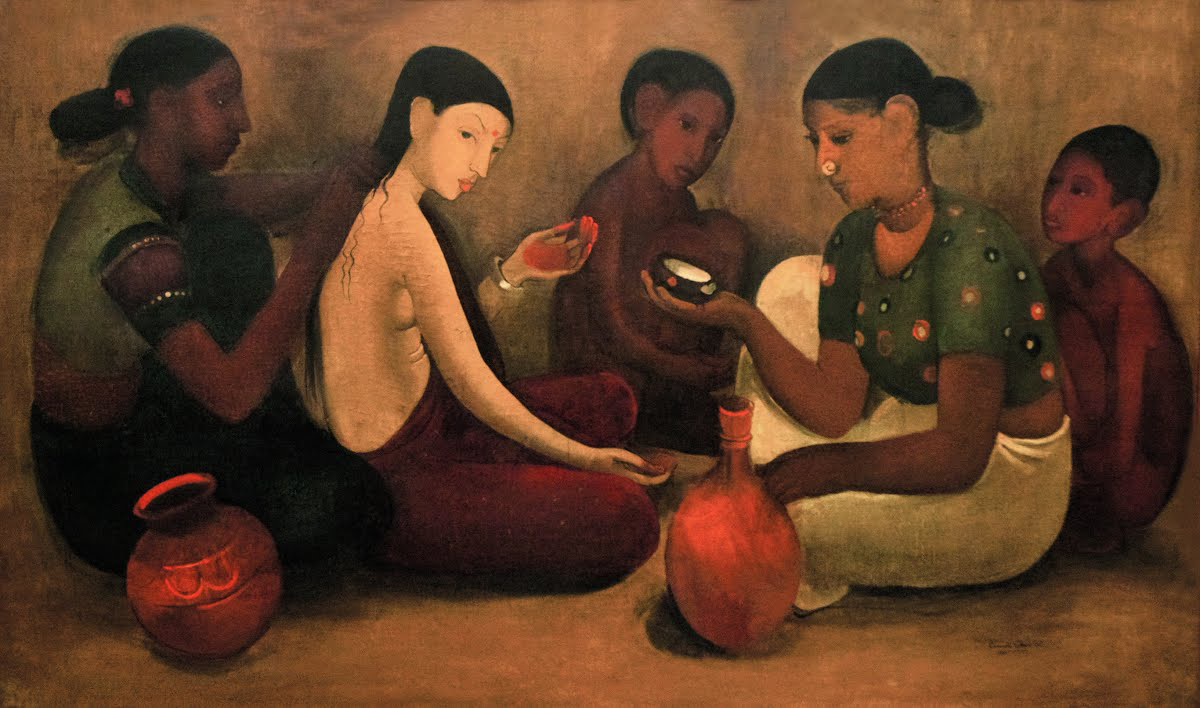
Bride’s toilet – 1937
Although from a family that was closely tied to the British Raj, Sher-Gil herself was a Congress sympathiser. She was attracted to the poor, distressed and the deprived and her paintings of Indian villagers and women are a meditative reflection of their condition. She was also attracted by Gandhi’s philosophy and lifestyle. Her paintings were at one stage even considered for use in the Congress propaganda for village reconstruction.
In September 1941, Egan and Sher-Gil moved to Lahore, then in undivided India and a major cultural and artistic centre. She lived and painted at 23 Ganga Ram Mansions, The Mall, Lahore where her studio was on the top floor of the townhouse she inhabited. Sher-Gil was known for her many affairs with both men and women, and she also painted many of the latter. Her work Two Women is thought to be a painting of herself and her lover Marie Louise. Some of her later works include Tahitian (1937), Red Brick House (1938), Hill Scene (1938), and The Bride (1940) among others. Her last work was left unfinished just prior to her death in December 1941.
In 1941, at age 28, just days before the opening of her first major solo show in Lahore, Sher-Gil became seriously ill and slipped into a coma. She later died around midnight on 5 December 1941, leaving behind a large volume of work. The reason for her death has never been ascertained. A failed abortion and subsequent peritonitis have been suggested as possible causes for her death. Her mother accused her doctor husband Egan of having murdered her. The day after her death, Britain declared war on Hungary and Egan was interned as an enemy alien. Sher-Gil was cremated on 7 December 1941 in Lahore.
Legacy
Sher-Gil’s art has influenced generations of Indian artists and her depiction of the plight of women has made her art a beacon for women at large both in India and abroad. The Government of India has declared her works as National Art Treasures, and most of them are housed in the National Gallery of Modern Art in New Delhi. Some of her paintings also hang at the Lahore Museum. A postage stamp depicting her painting ‘Hill Women’ was released in 1978 by India Post, and the Amrita Shergil Marg is a road in Lutyens’ Delhi named after her.
Sher-Gil was able to prove to western societies that Indians were able to make fine art. Her work is deemed to be so important to Indian culture that when it is sold in India, the Indian government has stipulated that the art must stay in the country – fewer than ten of her works have been sold globally.
Sher-Gil was sometimes known as India’s Frida Kahlo because of the “revolutionary” way she blended Western and traditional art forms.
ENJOY THIS SLIDESHOW OF SOME OF HER WORK…
Here’s a Pinterest board full of her work to inspire you!
STUDIOWORKS HOMEWORK
I highly recommend you watch this short documentary about Amrita Sher-Gil and her short but extraordinary life.
Master Artist Guide
Sketchbook Explorations
EXPLORATION 1
Sher-Gil inspired
I was very attracted to Amrita Sher-Gil’s work especially the piece entitled – Three Girls. So I did a master study of it using pastels. Find a piece of her work that you enjoy and do a study of it in a medium you like. Remember, it’s more about studying the piece than it is about getting it perfectly accurate!
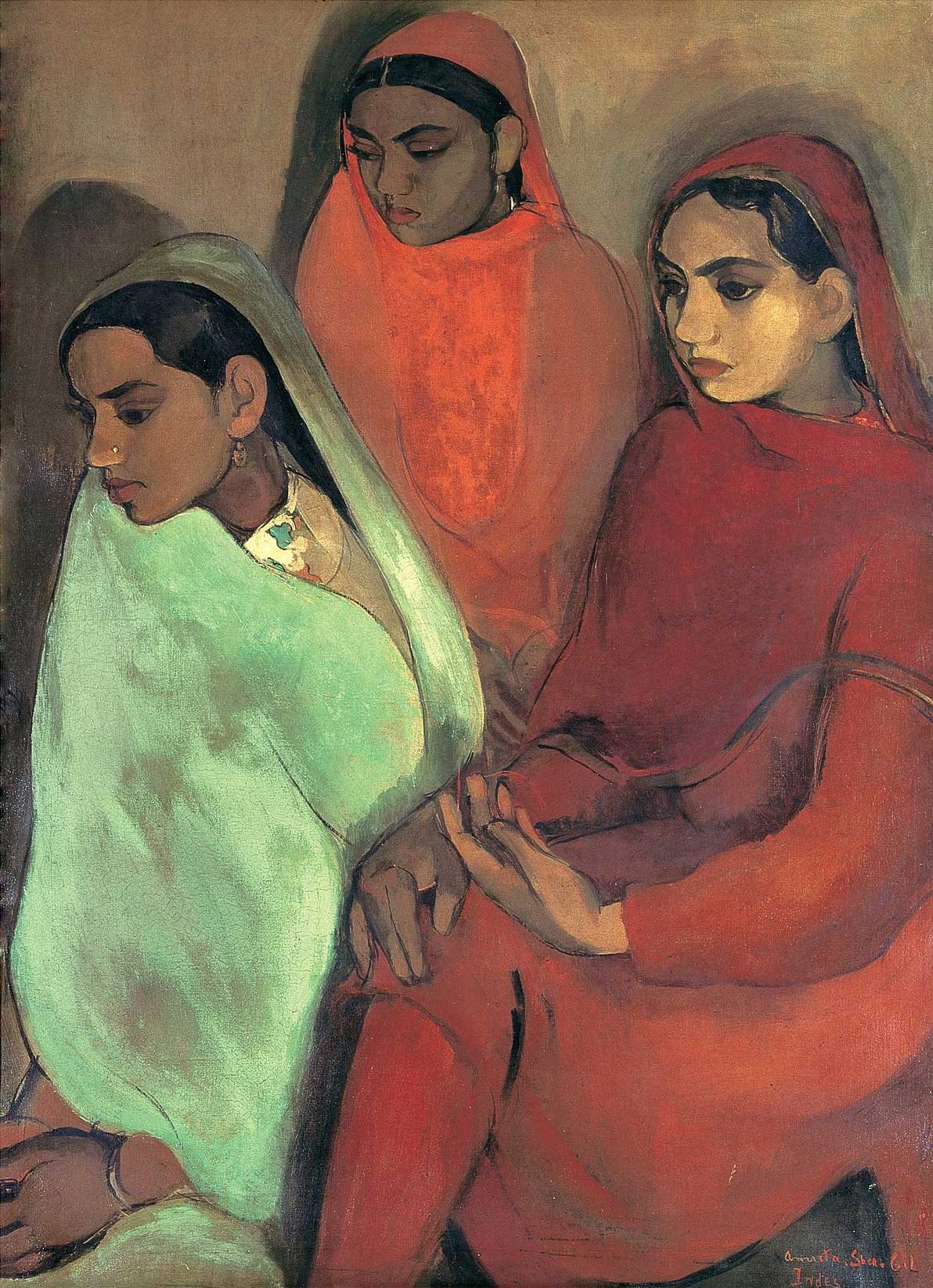
Three Girls – 1935
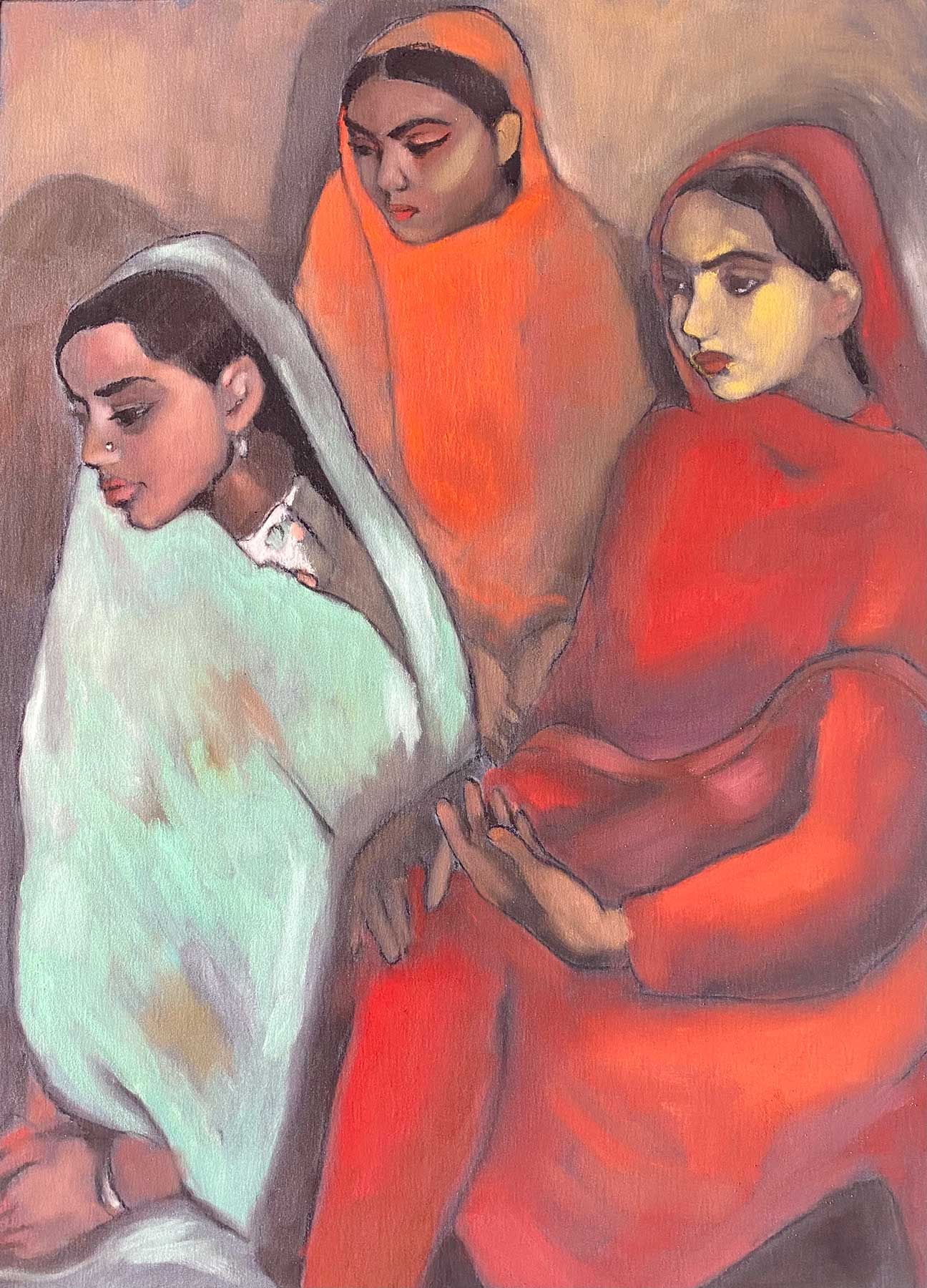
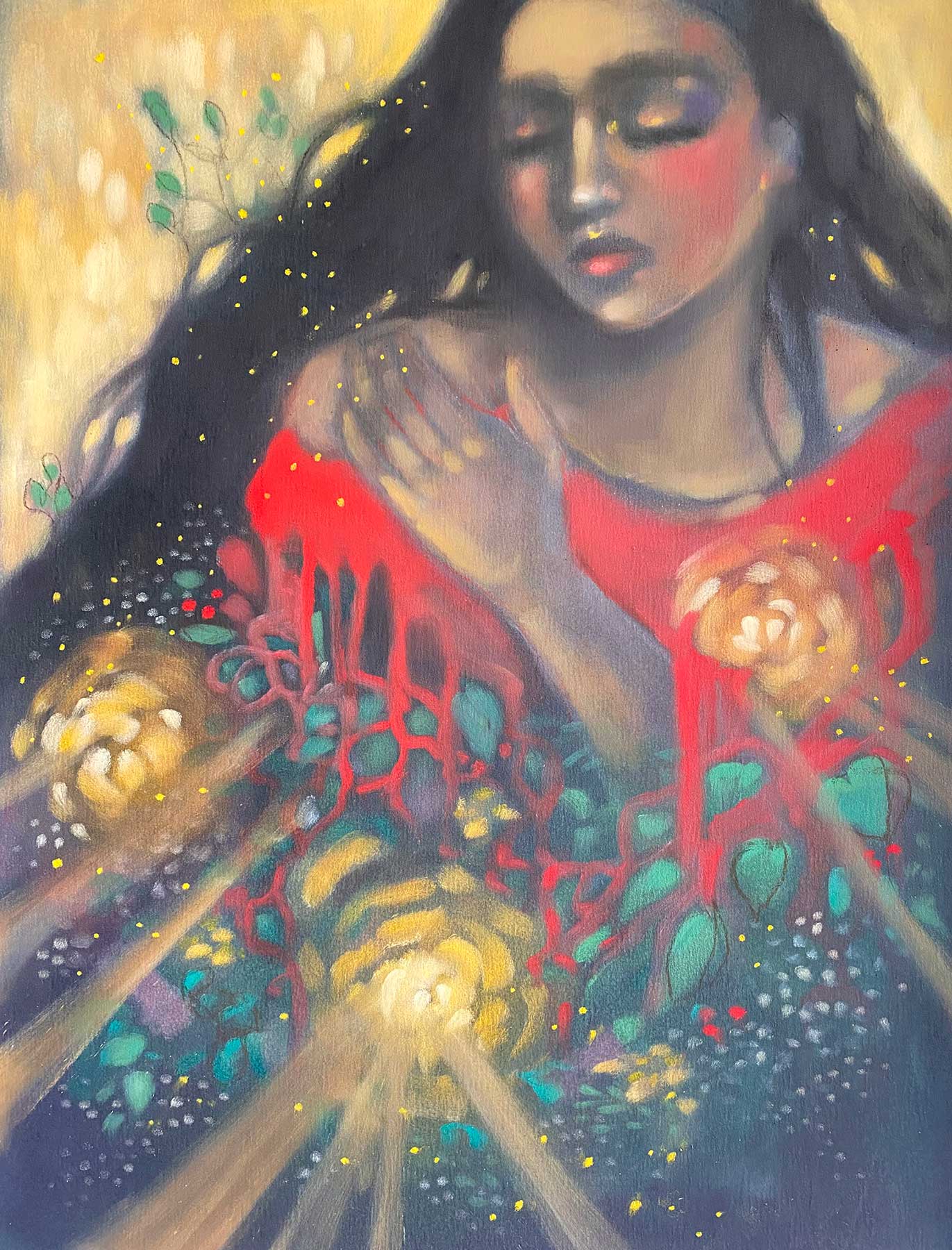
EXPLORATION 2
Fire Goddess
Create a sketch, collage, journal page or painting dedicated to a Fire Goddess of your choice. Let the symbols, colors and messages from this Goddess inspire you! I loved creating my Pele. I created mine with my PanPastels.
EXPLORATION 3
Firelight
This month, I am happy to share this fire inspired pastel lesson with you! I created this using Pan Pastels, soft pastels and pastel pencils! The focus was on value and creating a fire like light around the figure! I hope you enjoy the lesson!
“The time has come to turn your heart into a temple of fire. Your essence is gold hidden in dust. To reveal its splendor you need to burn in the fire of love.”
– Rumi
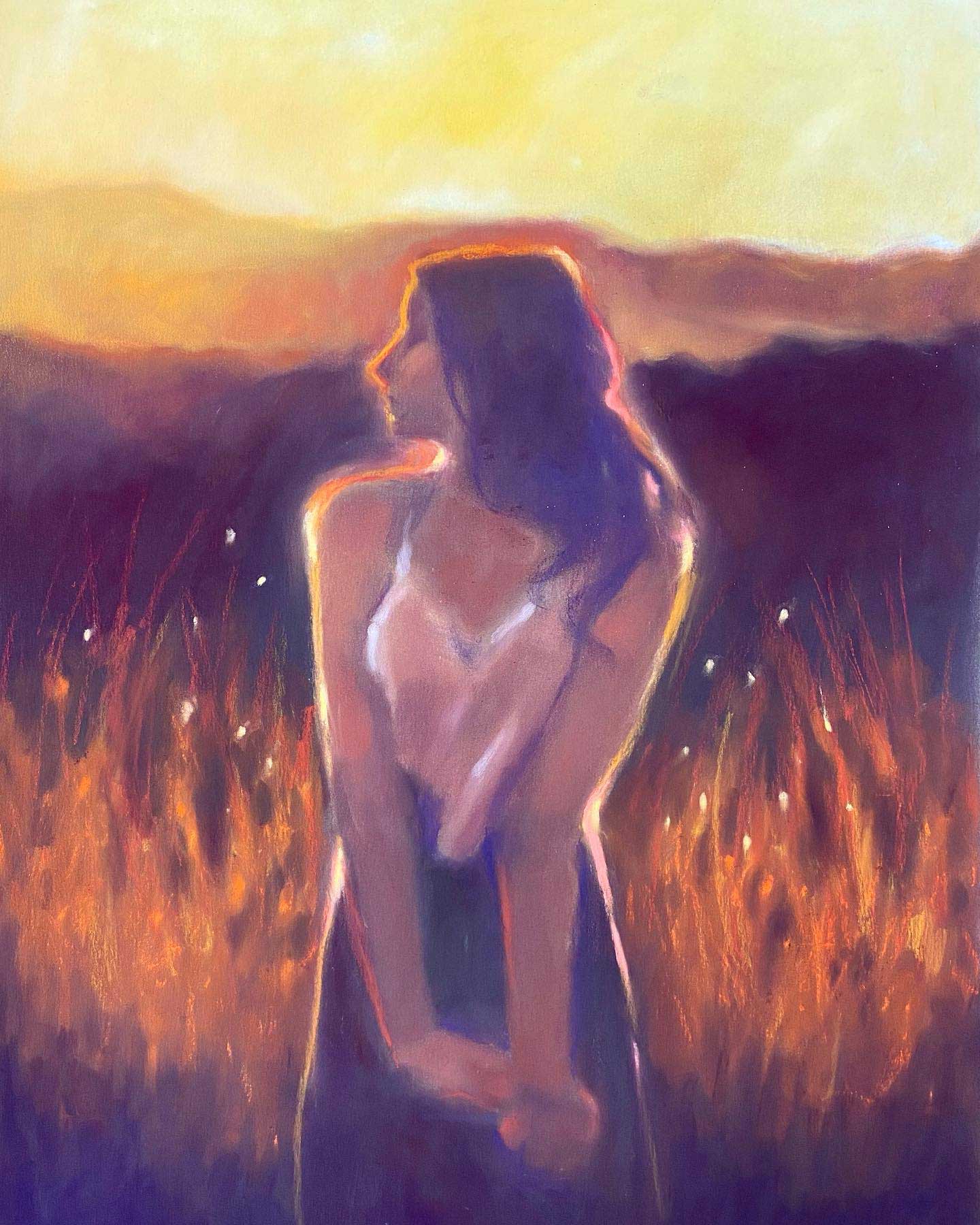
MONTHLY ART LESSON
with Ivy Newport
I’m incredibly delighted to share this Pastel lesson with you! In this lesson, we are focusing on value, form, color and light. Details are less important. I’ll show you how to block in the figure and landscape and slowly build up warm layers of color and finally adding dazzling light! I hope you enjoy this fire inspired lesson!
STUDIOWORKS
Submission Calls
If you’d like to be featured in an upcoming Studioworks Journal, we’d love to have you join our Creative Network! Our intention with Studioworks has always been to cultivate community involvement and collaboration. Featuring members from our creative community is such an honor and a beautiful way to share the light you all bring. Come join us!
STUDIOWORKS PODCAST
issue thirty-five
You can also listen to this month’s issue of the Studioworks journal. I find I love listening to books, podcasts and music while I draw, paint or go on a long walk. Enjoy.
Studioworks : issue thirty-five

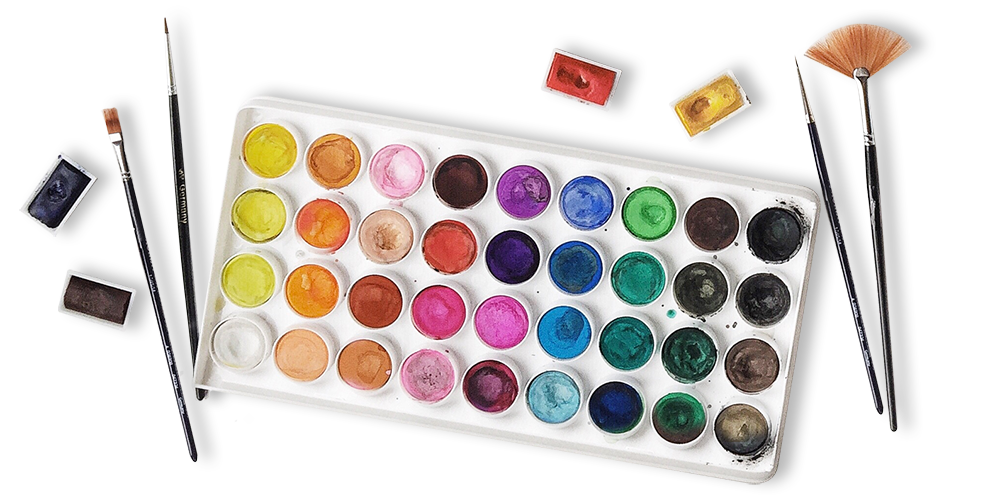
inspiration: curated
Books to Discover & Enjoy
MUSIC PLAYLIST
I had so much fun curating this list. I hope you enjoy!!
THINGS TO WATCH
PINTEREST BOARDS
CLASSES TO TRY
Here are just a few of our fantastic classes! They feel in alignment with this month’s issue! I highly recommend checking them out if you haven’t already. Enjoy!

© 2019 IVYNEWPORT, LLC ALL RIGHTS RESERVED.

